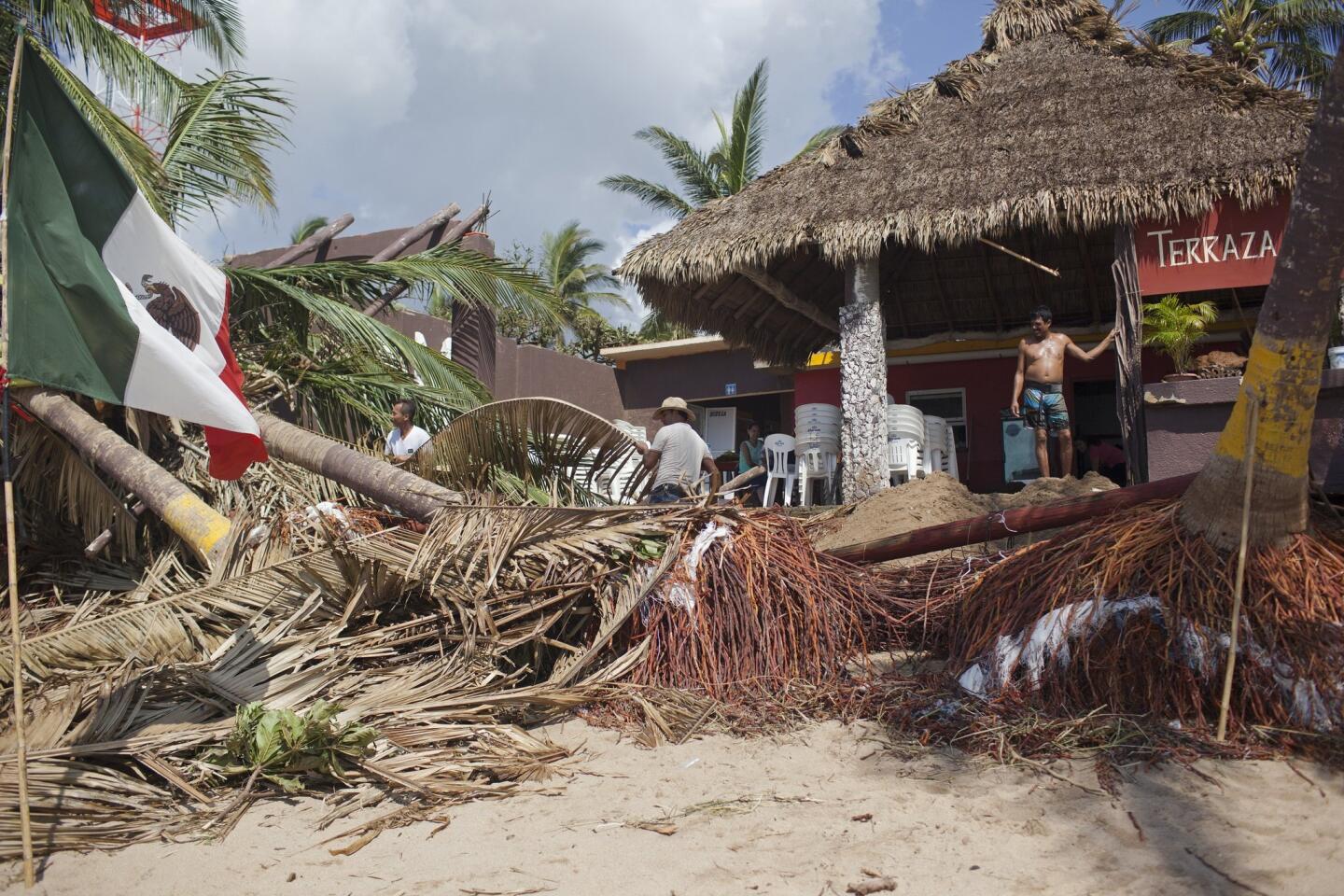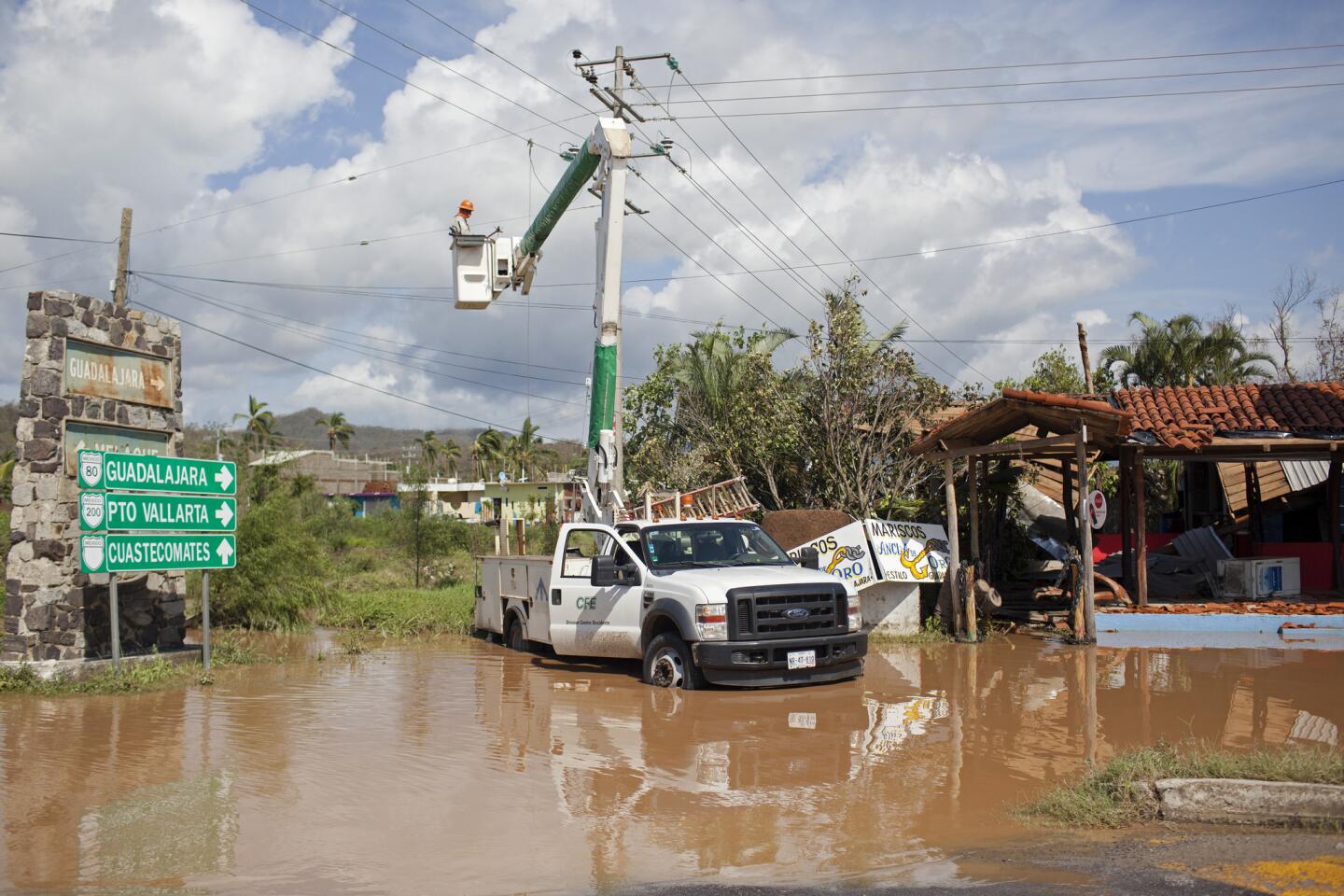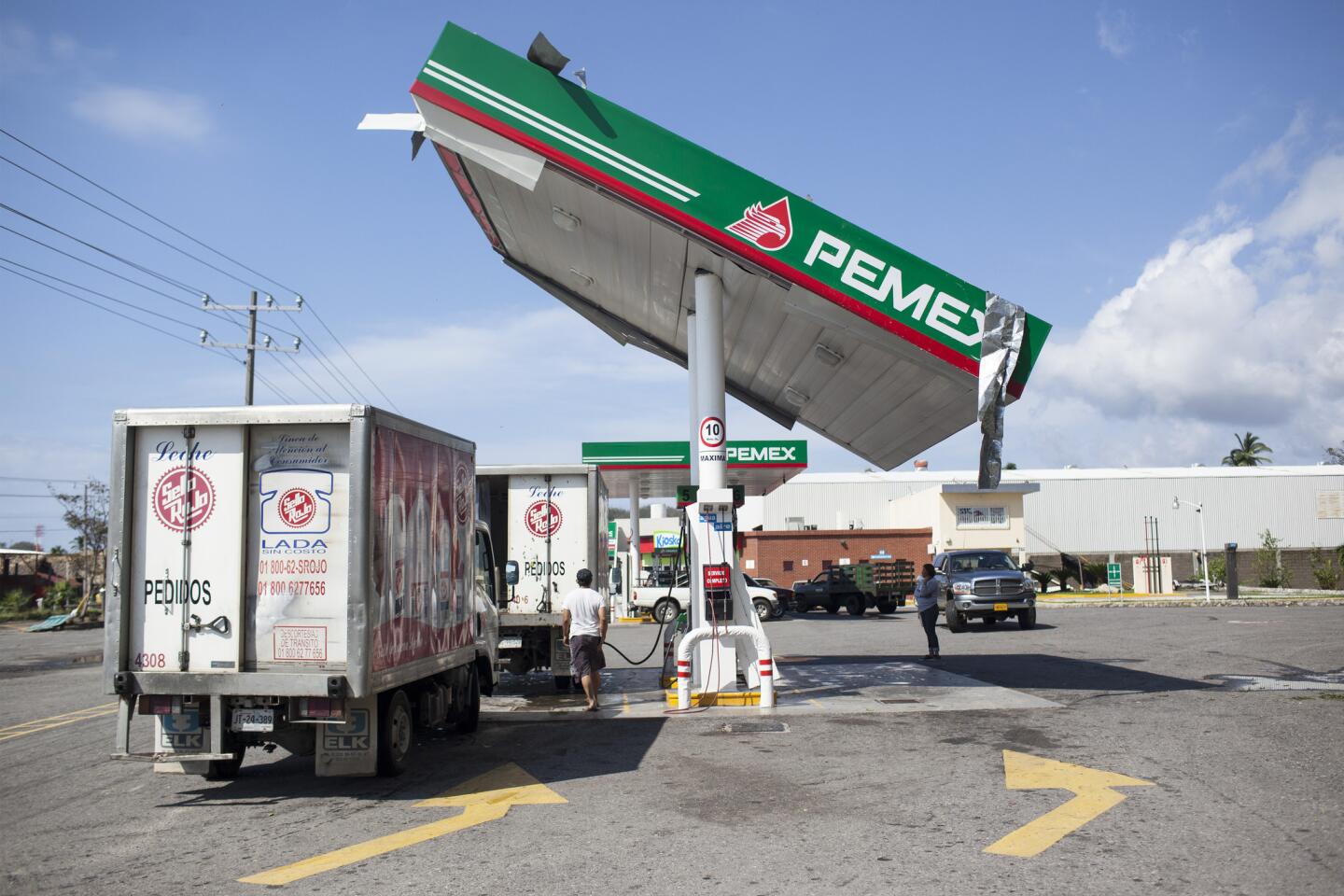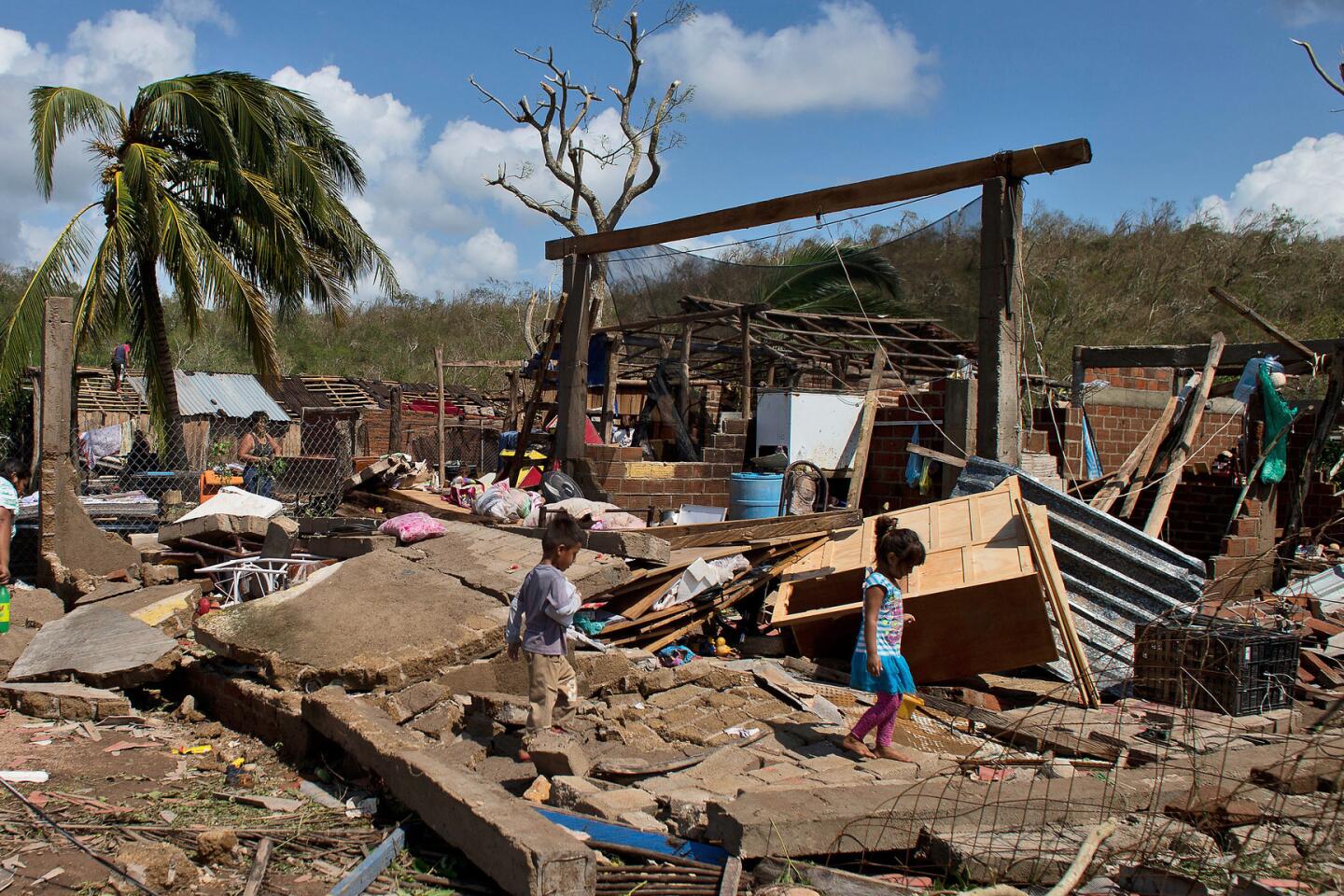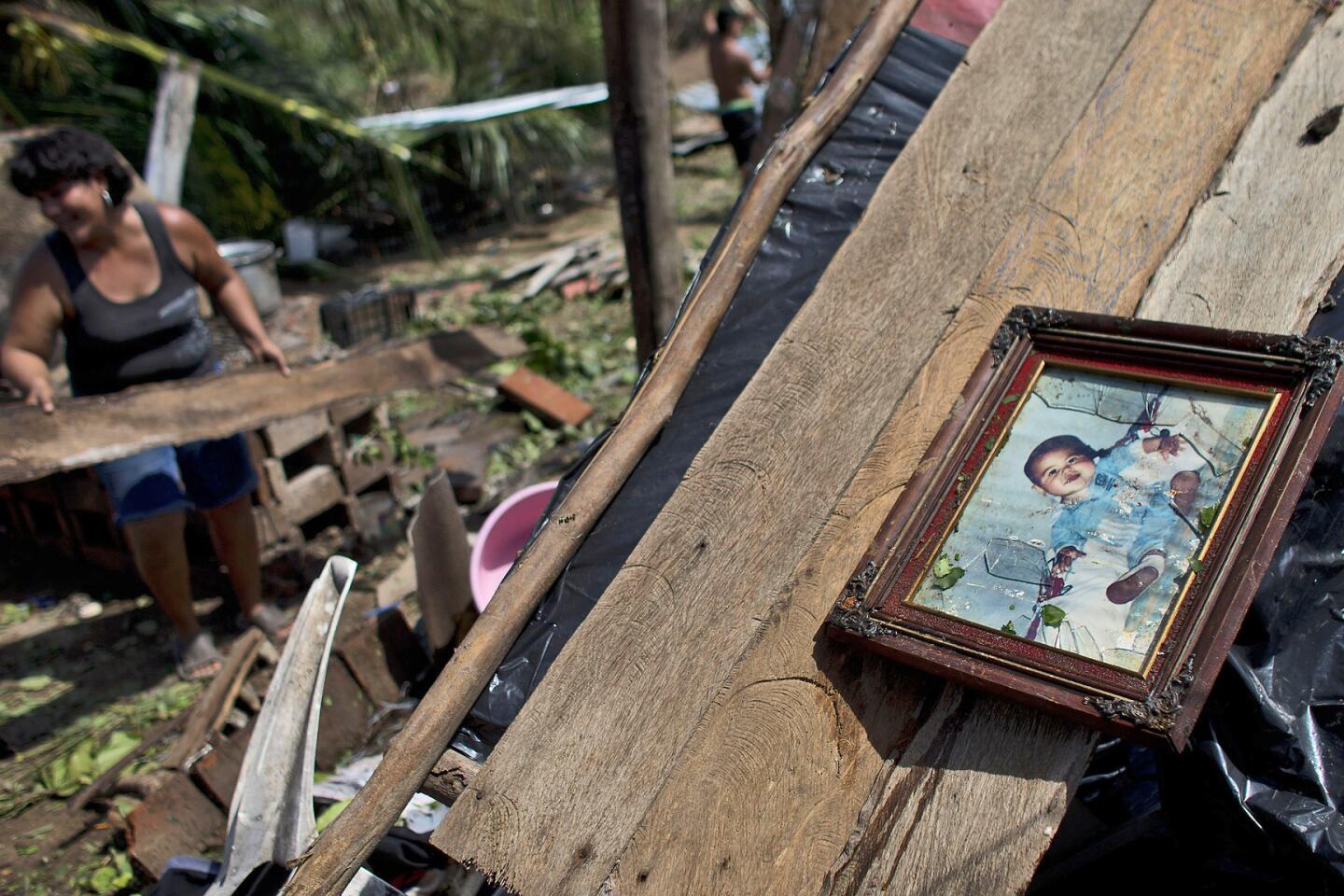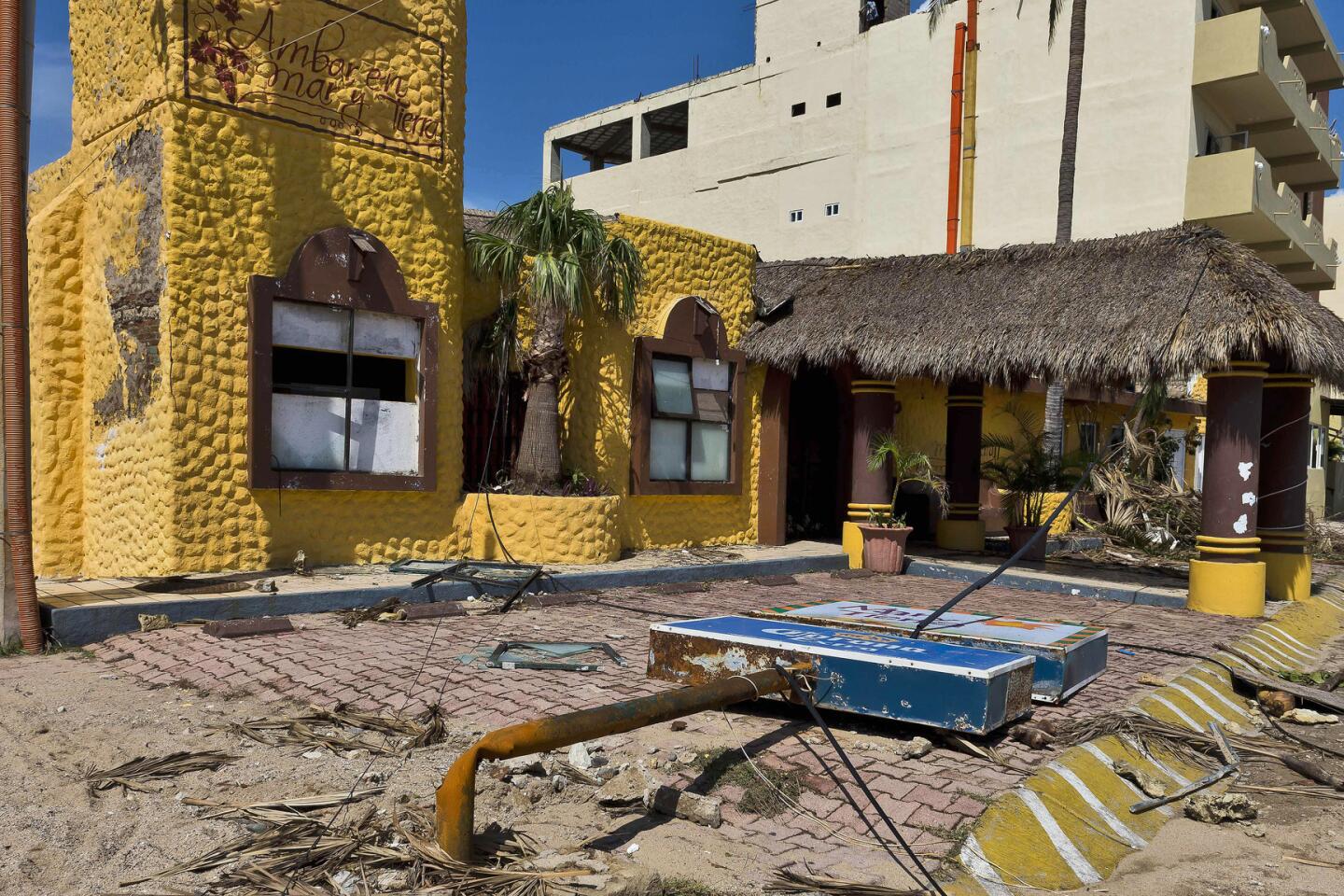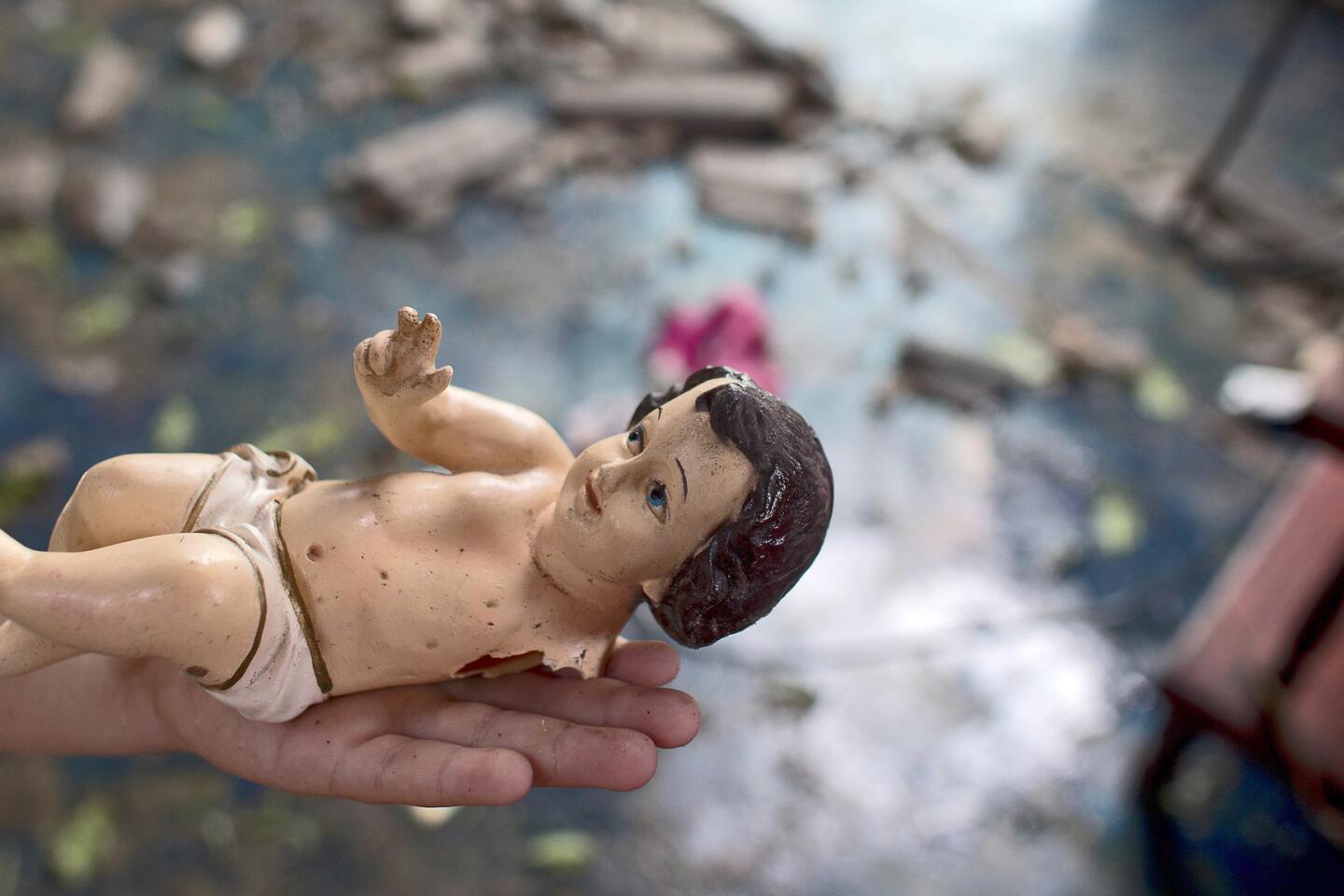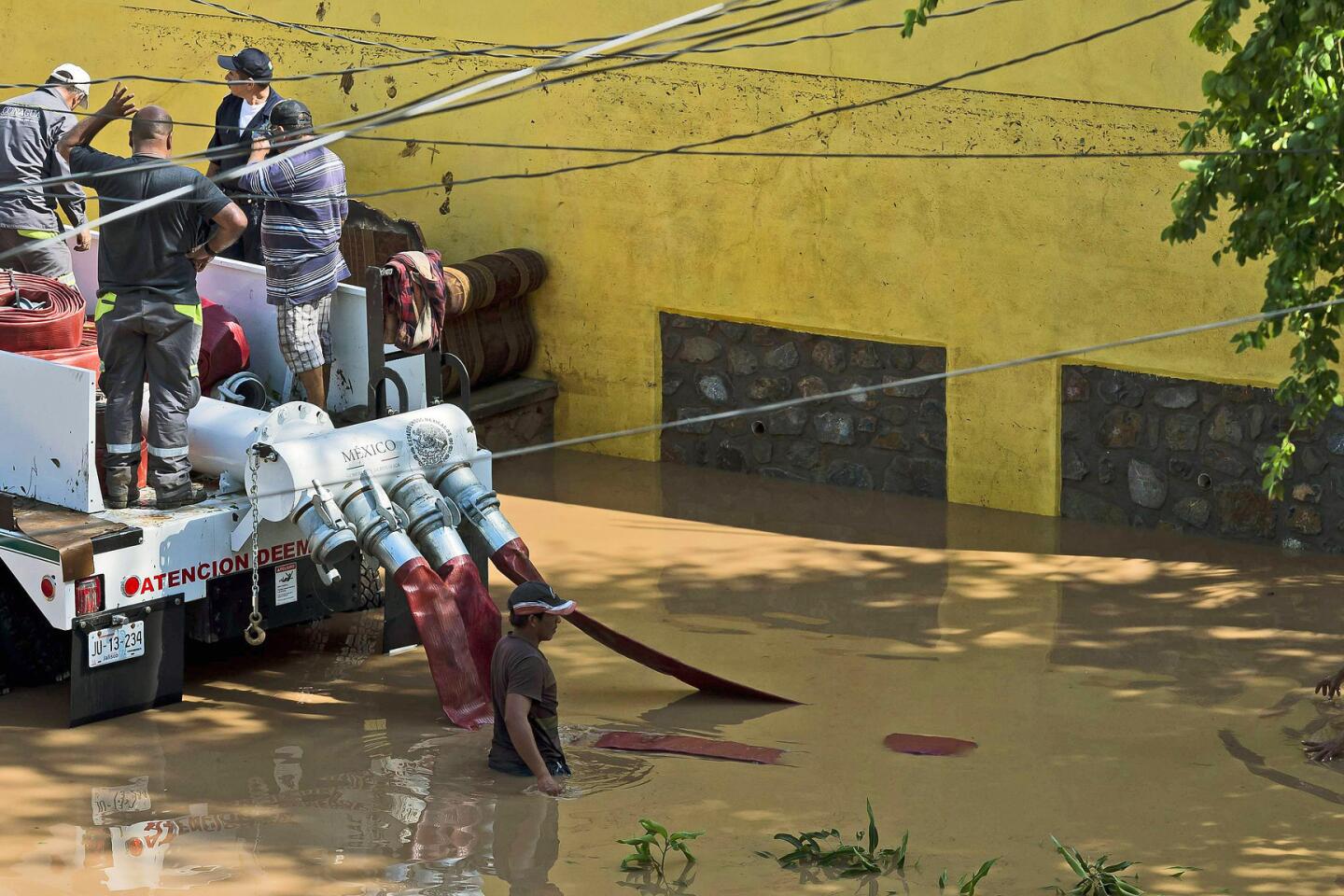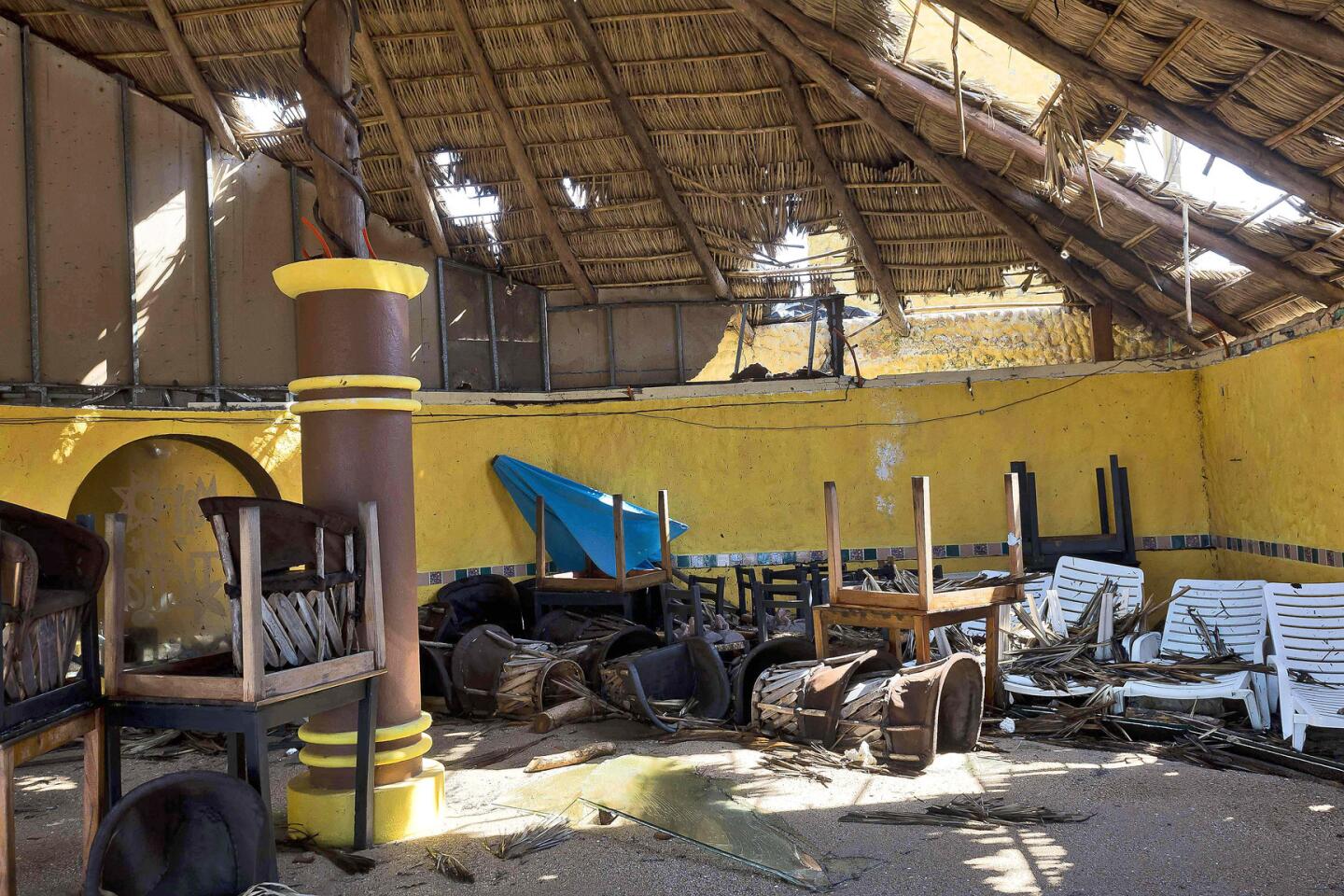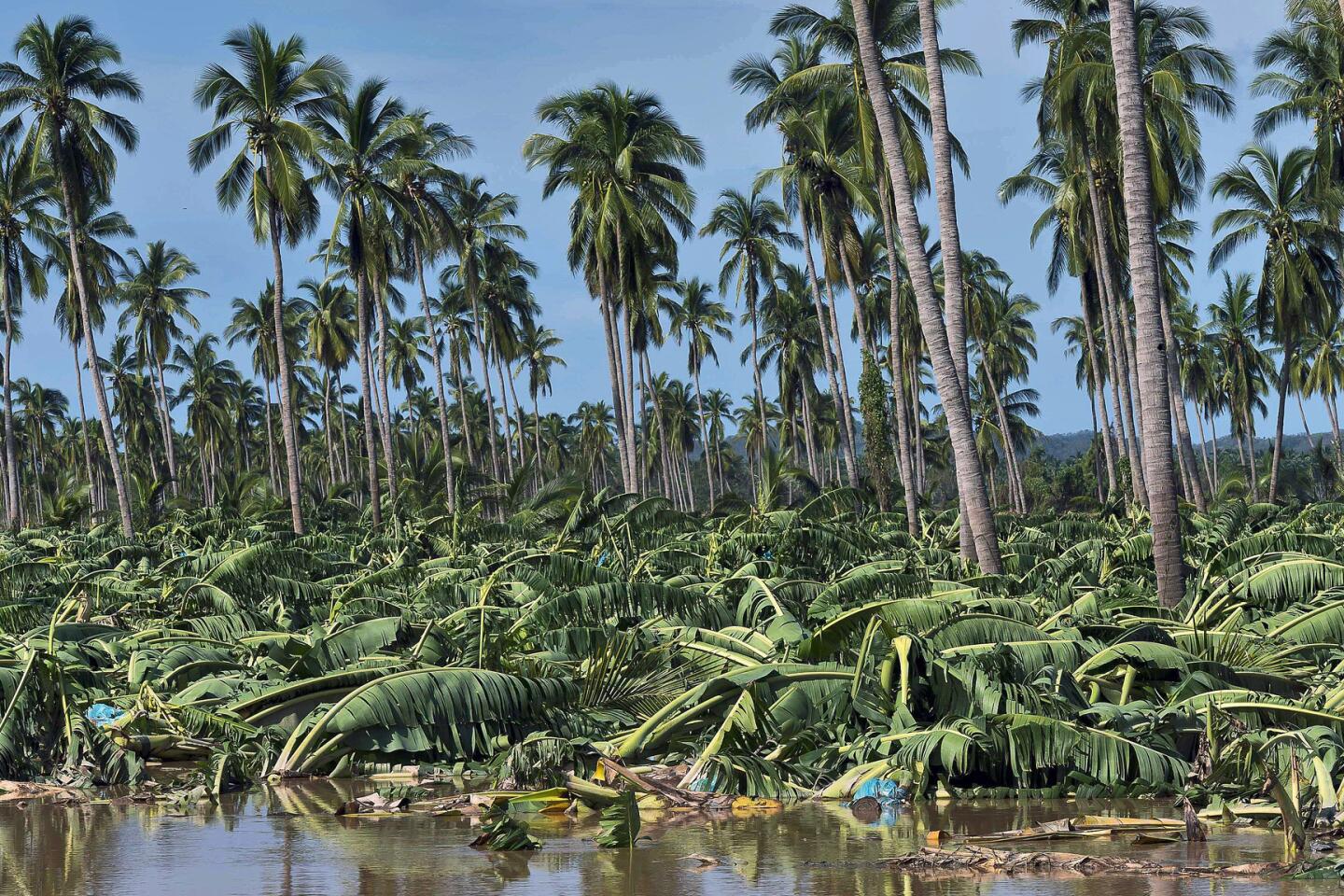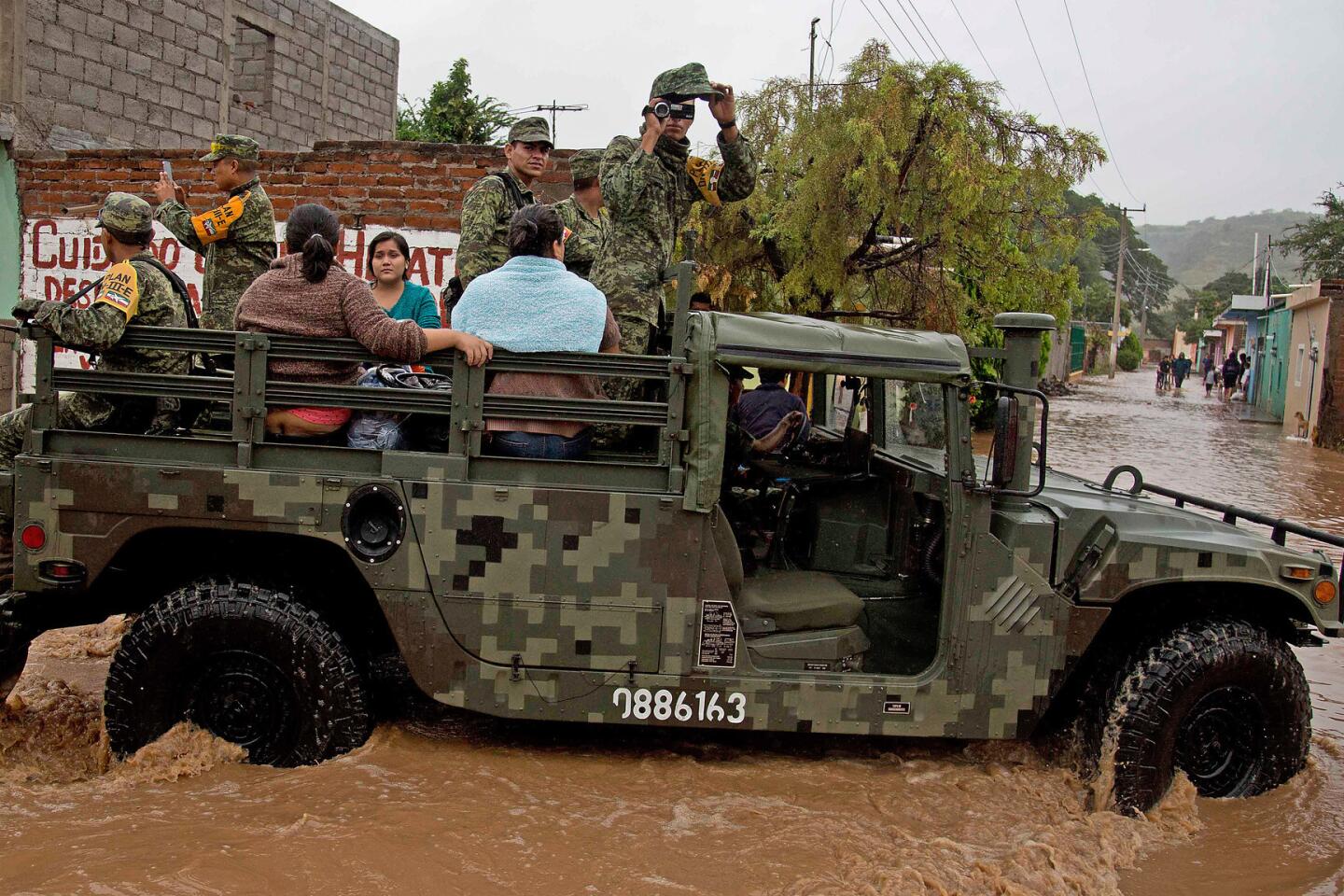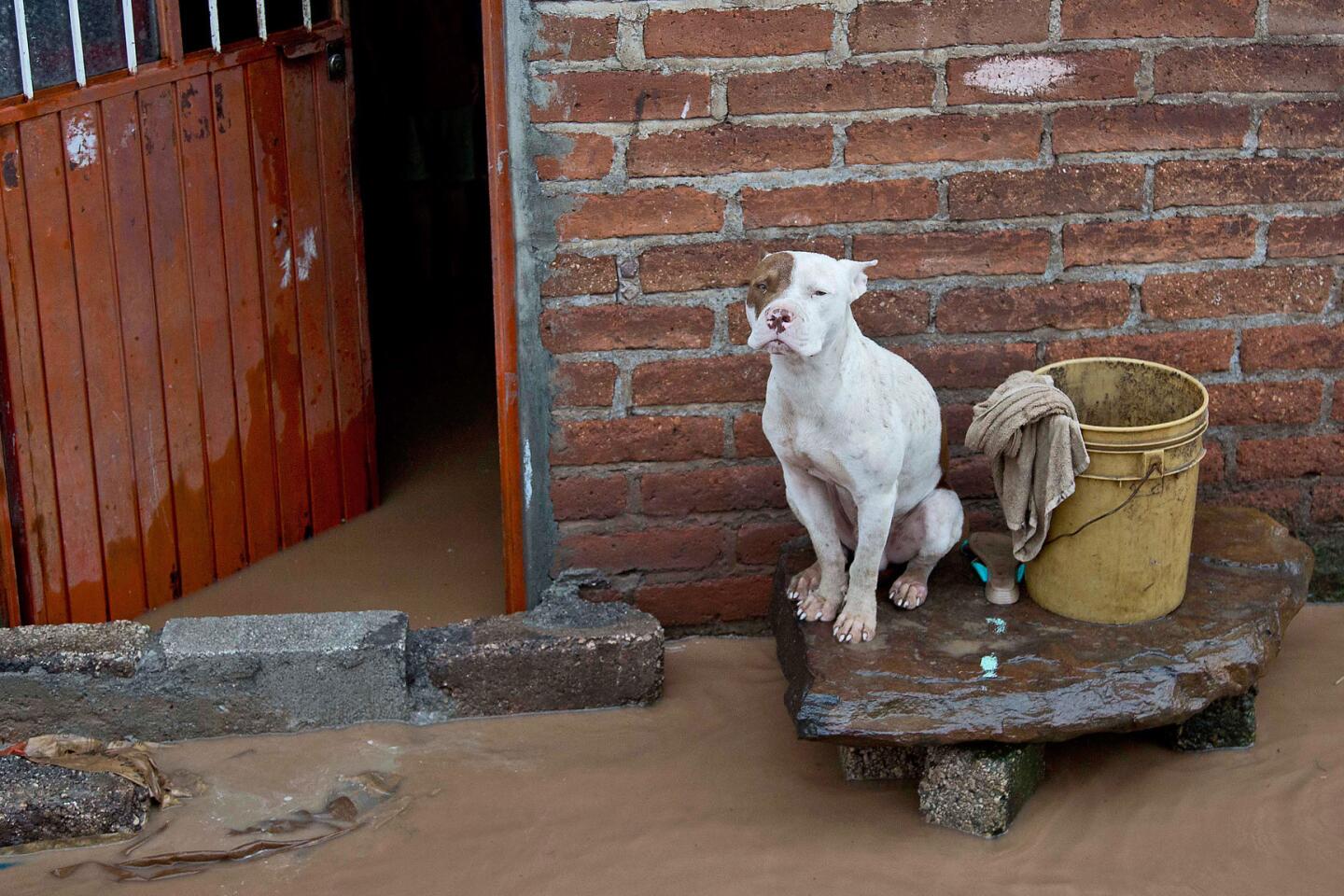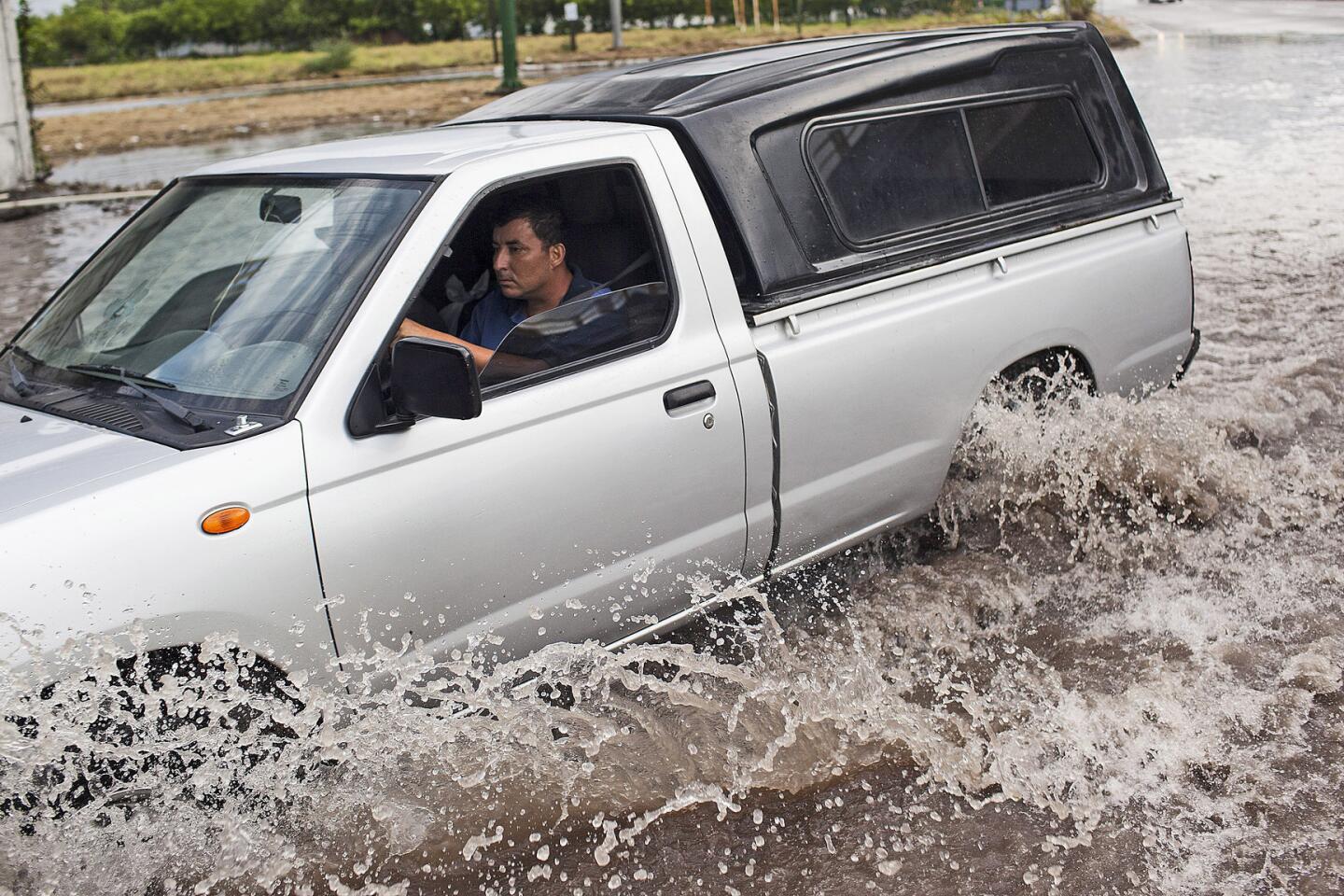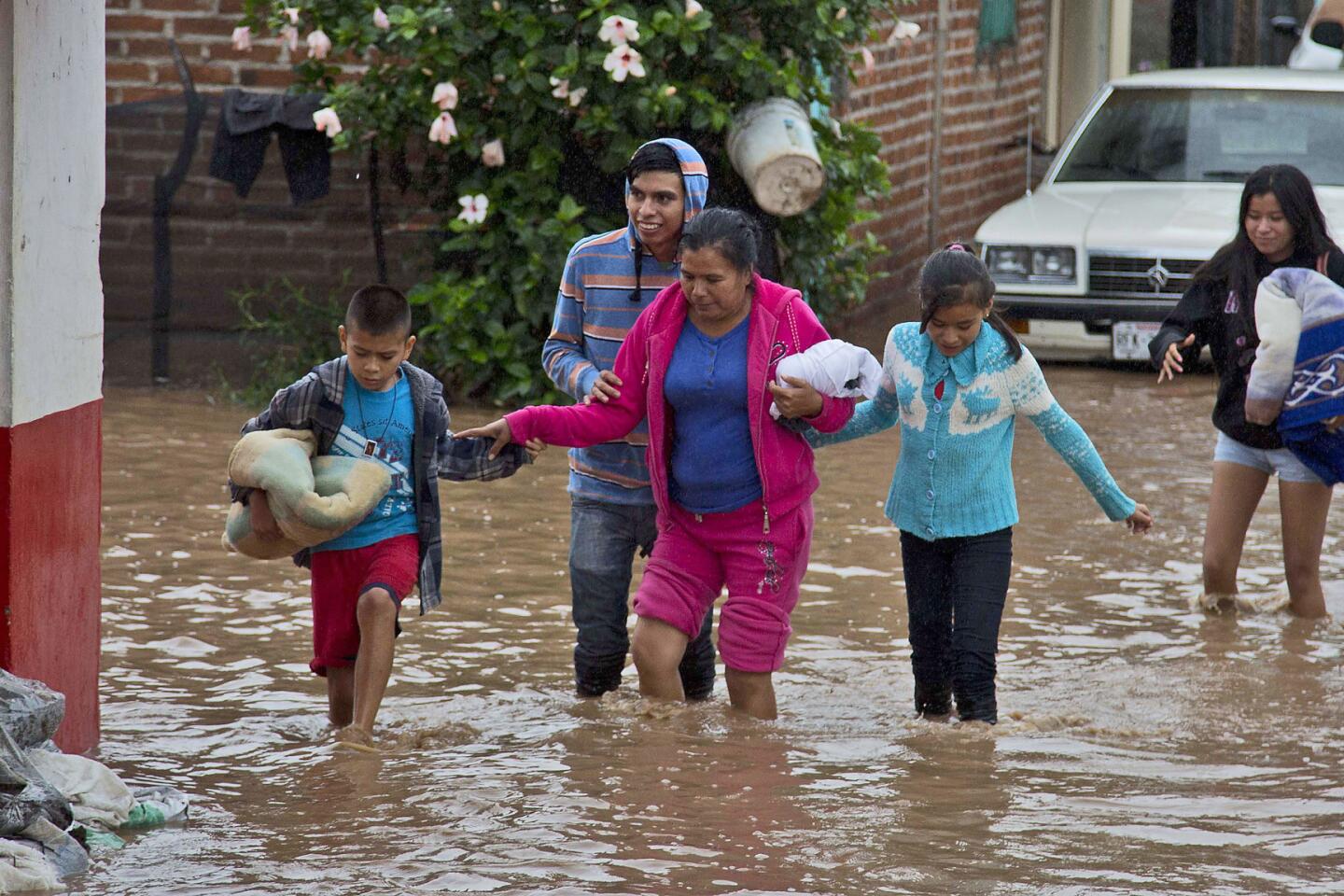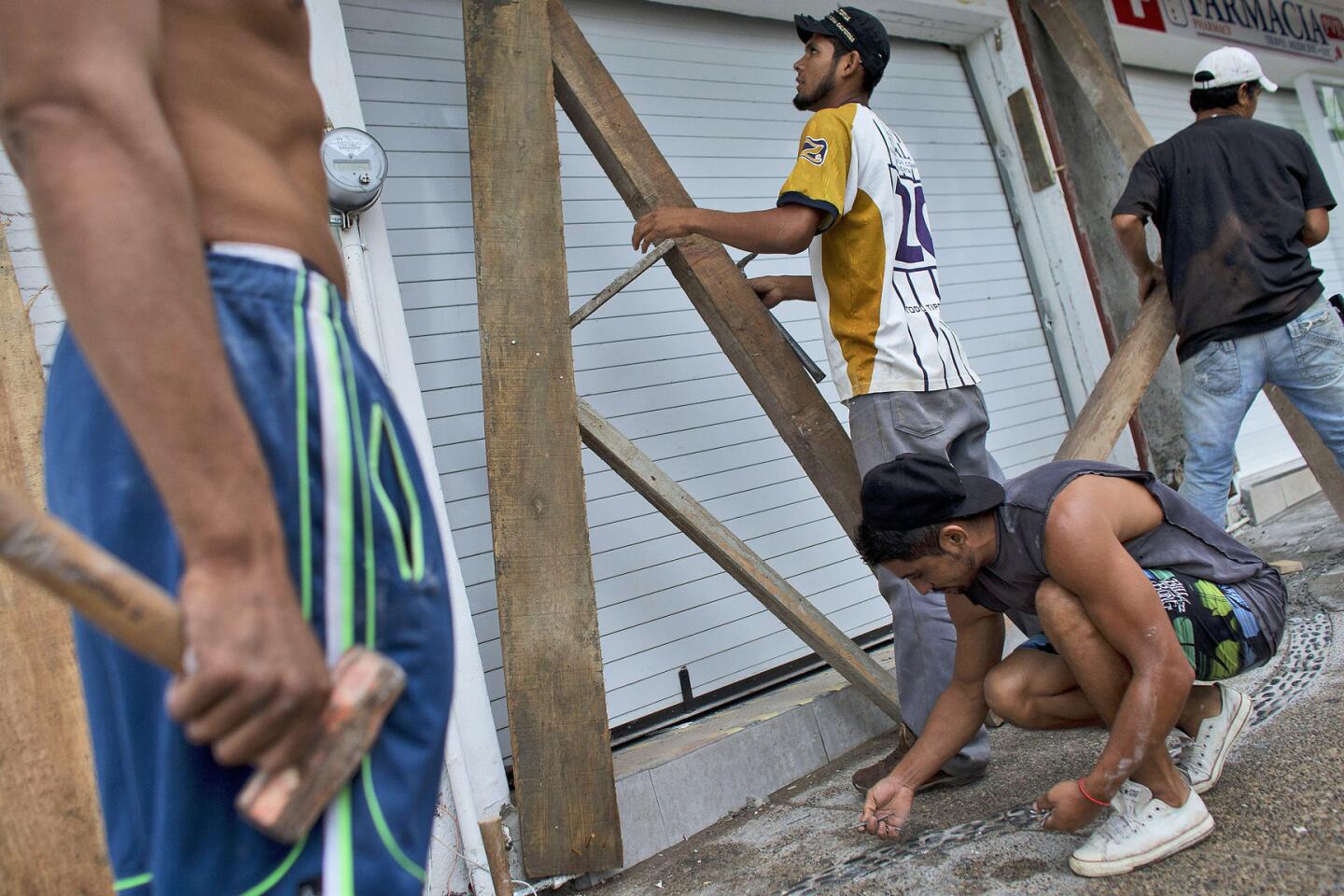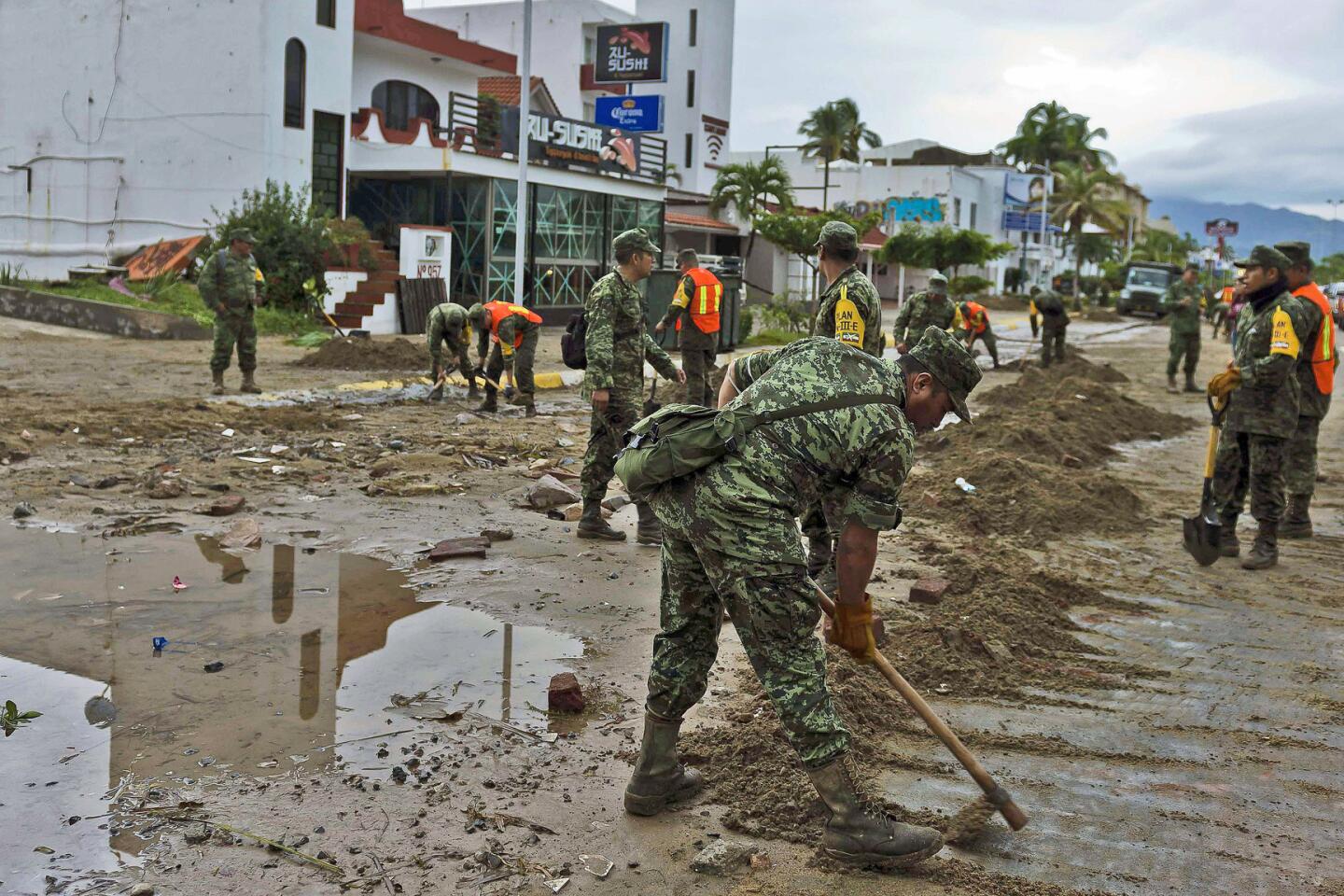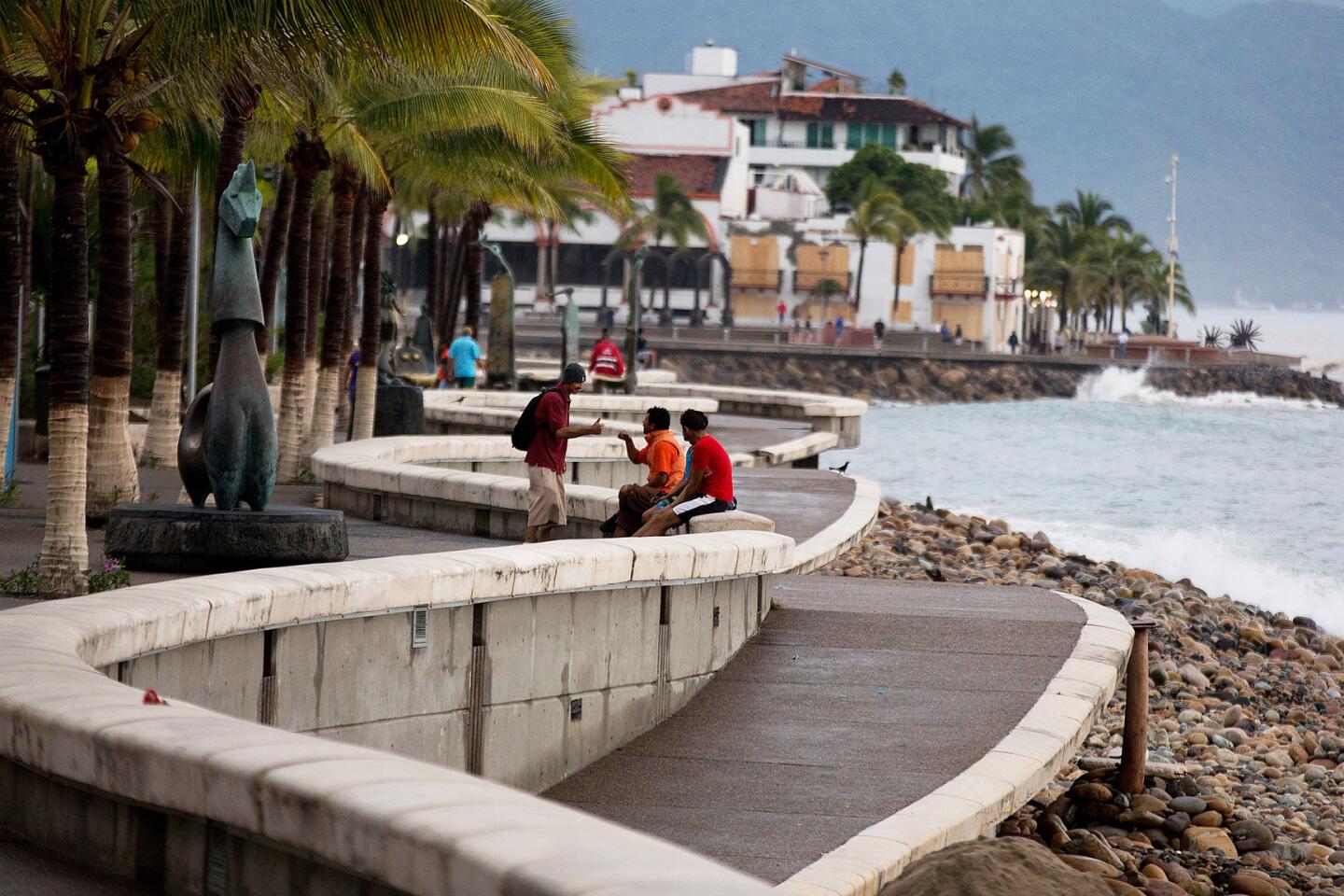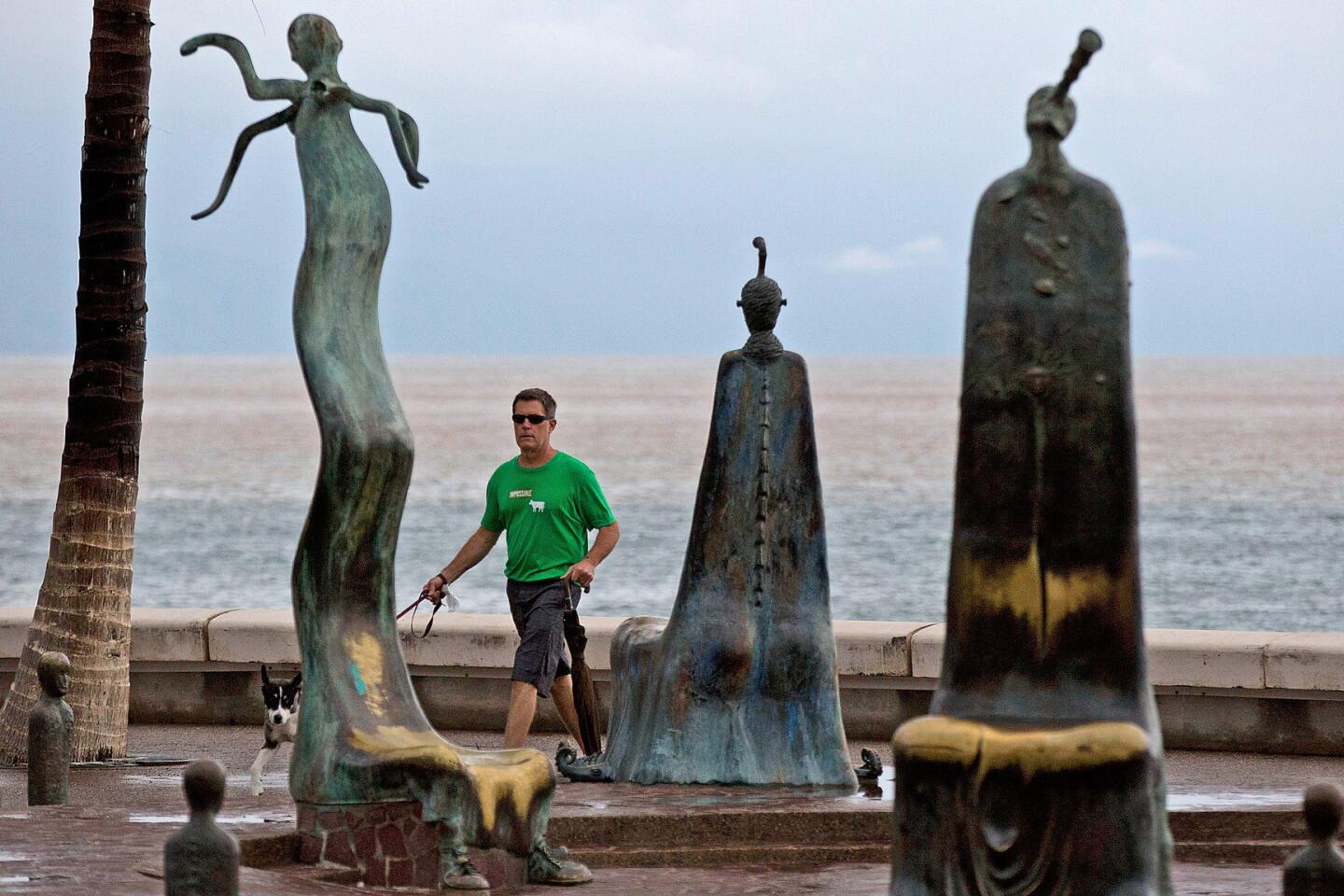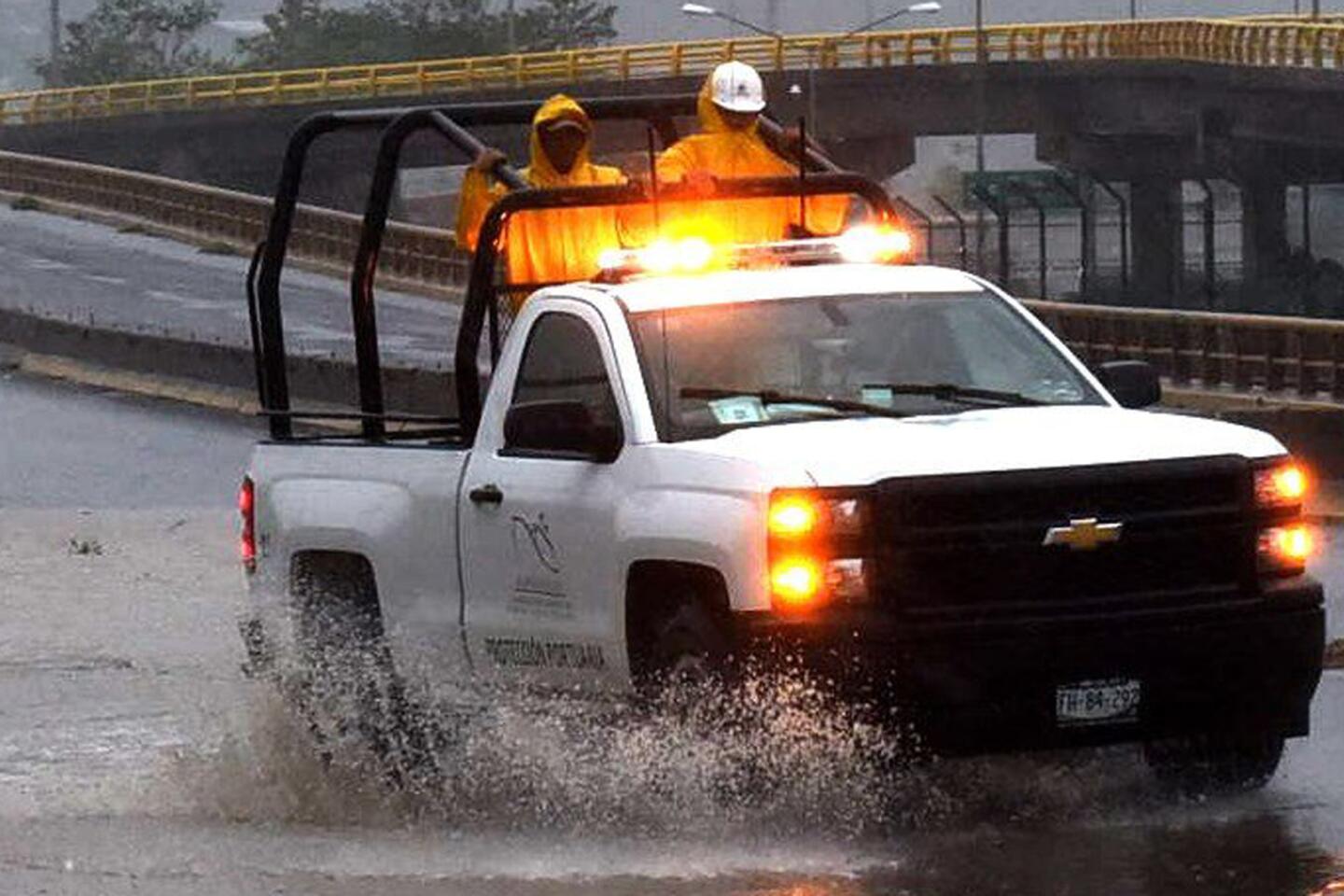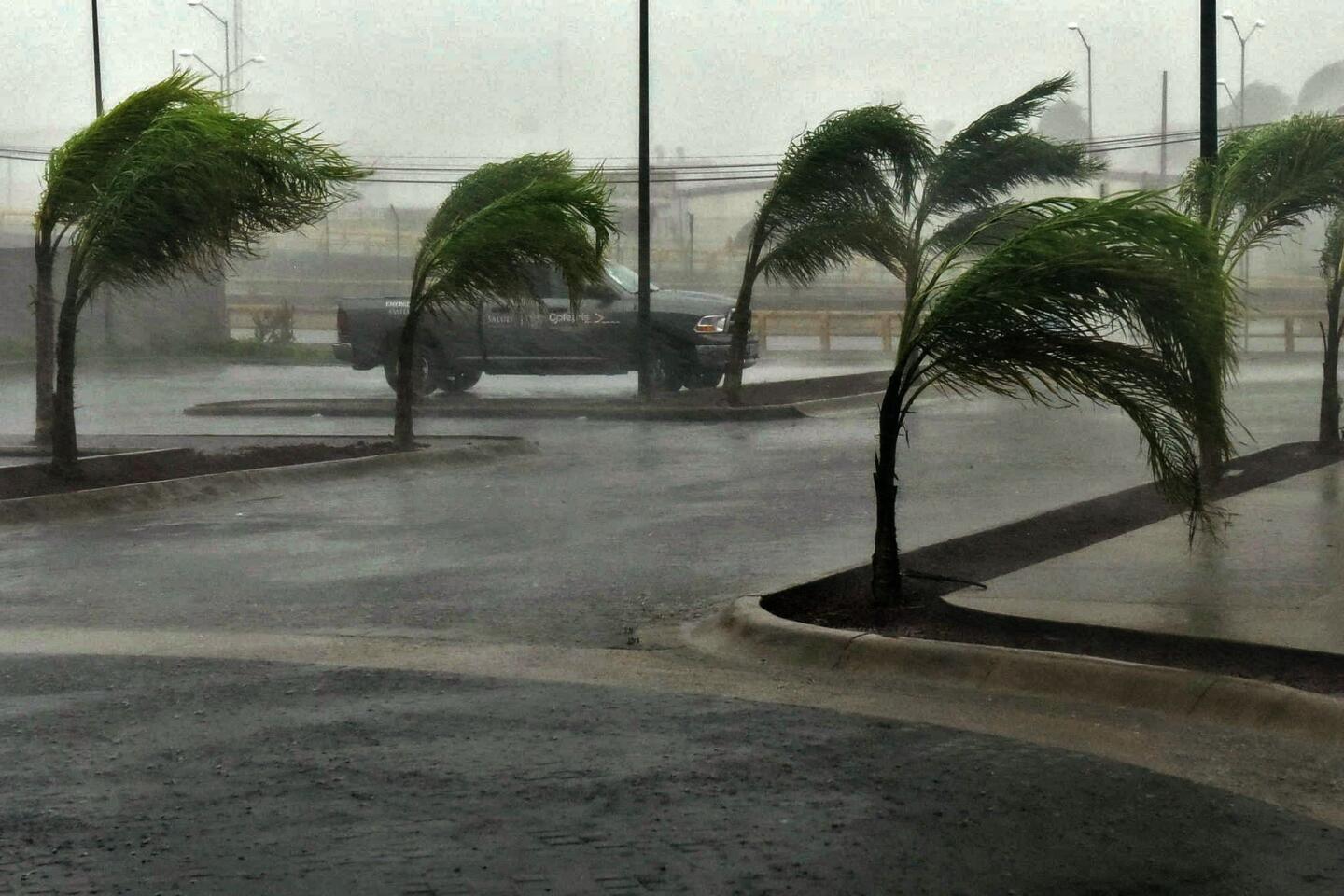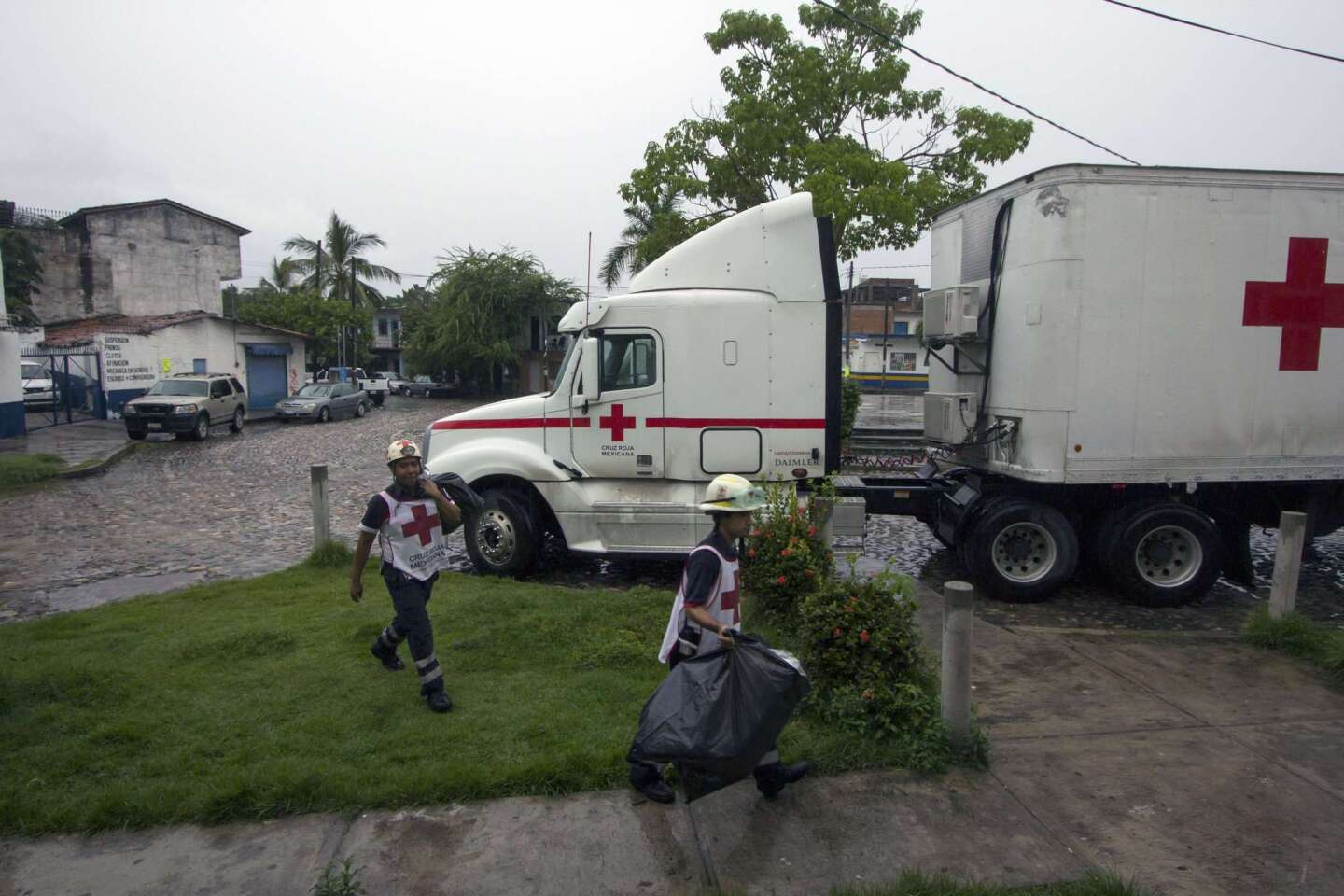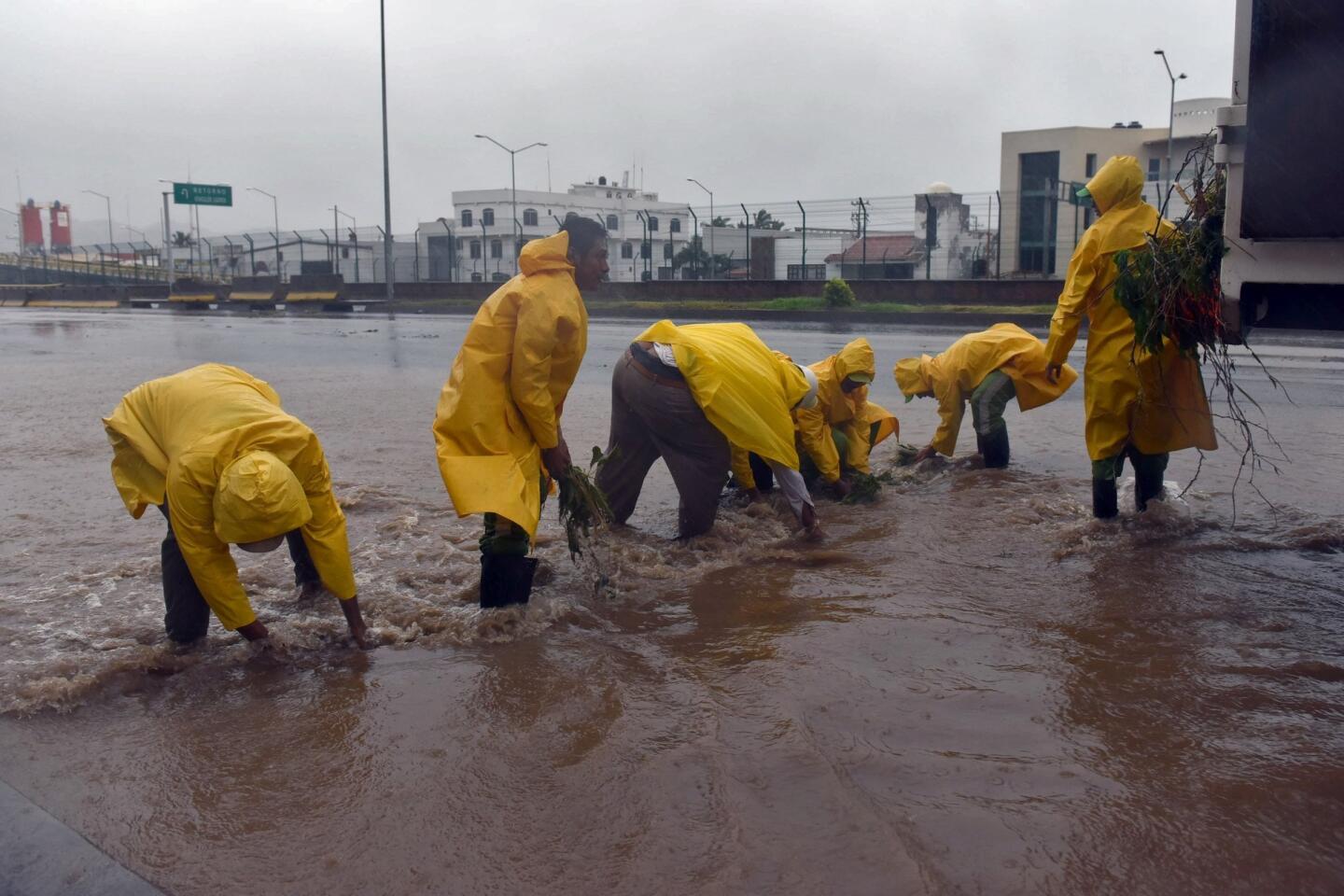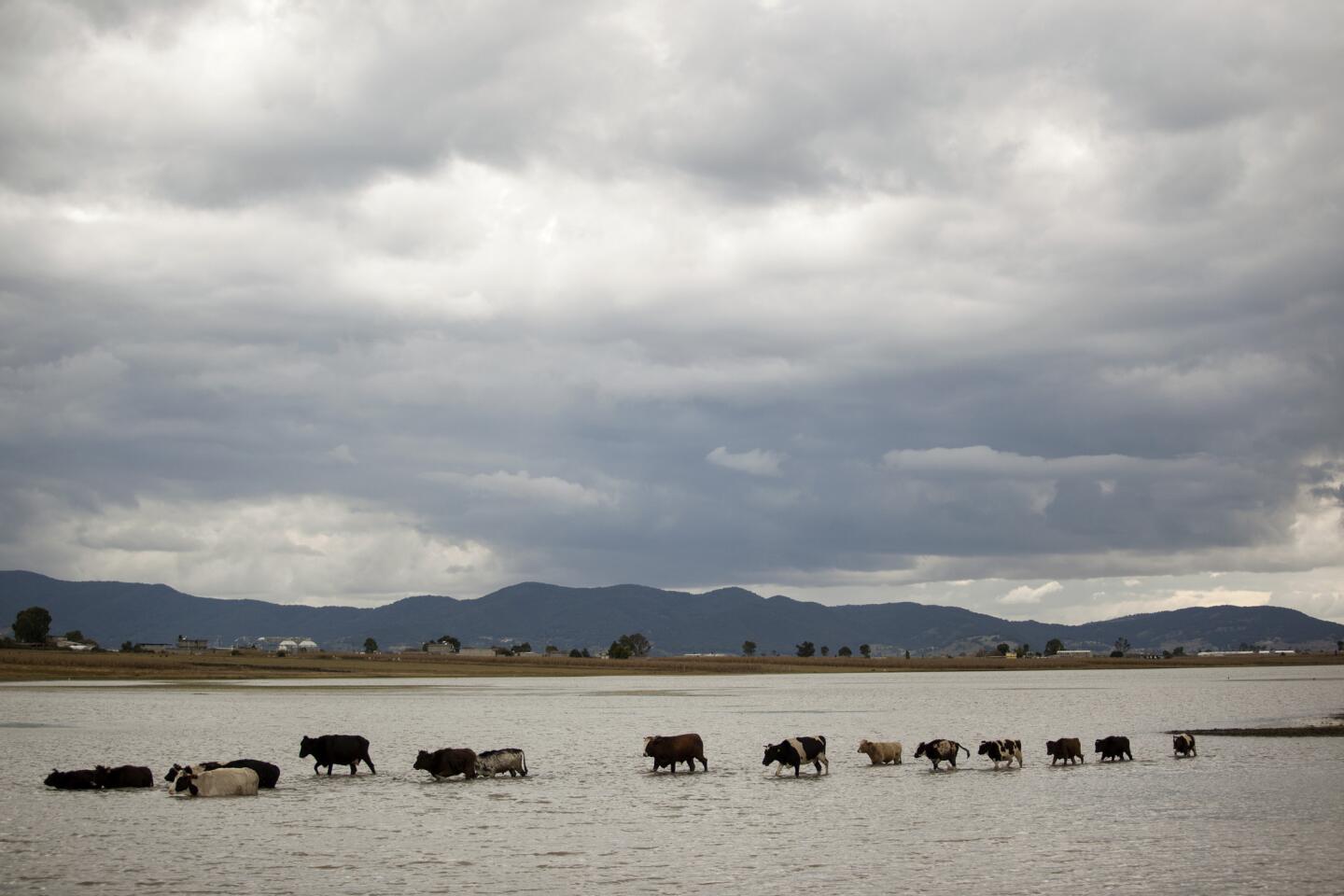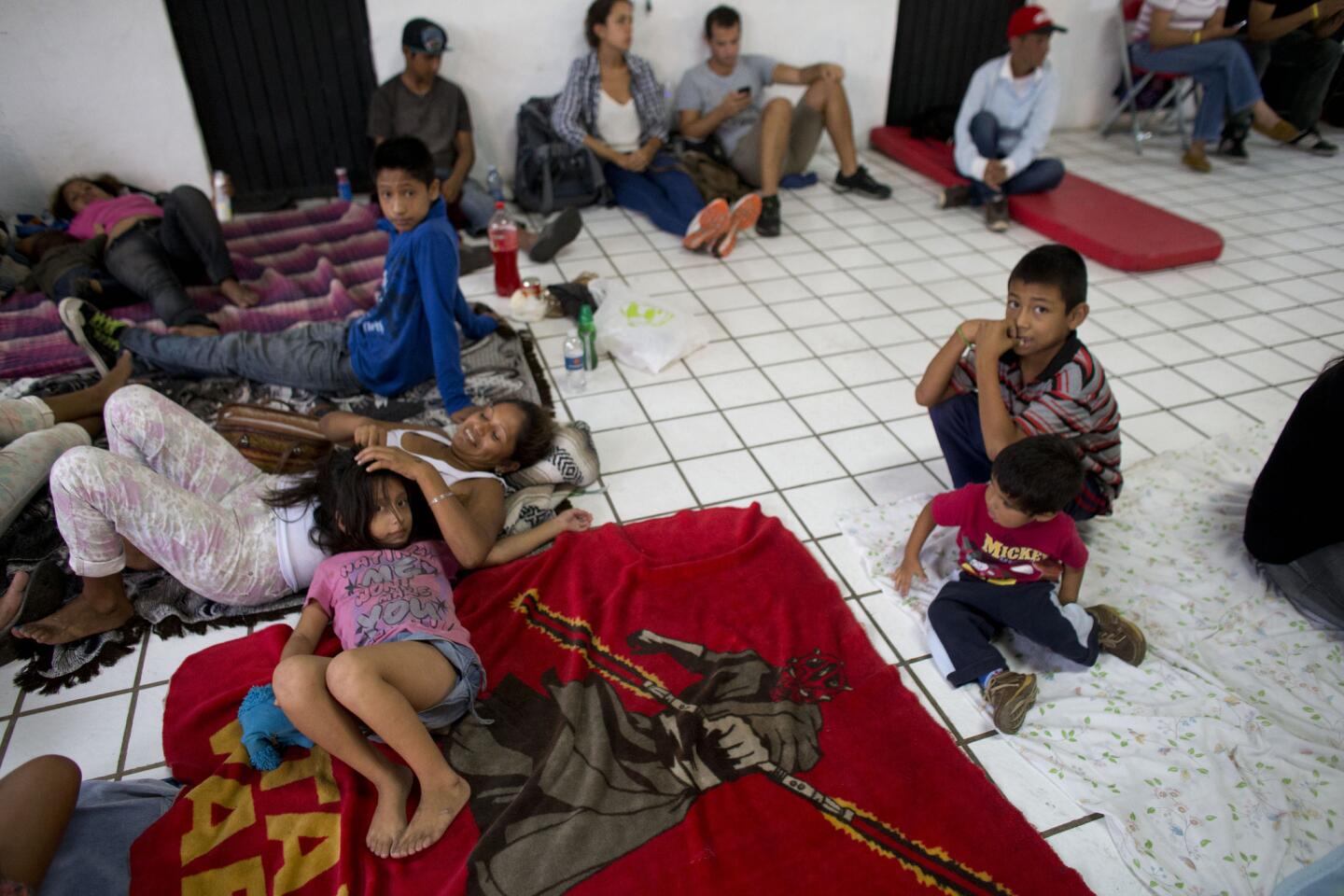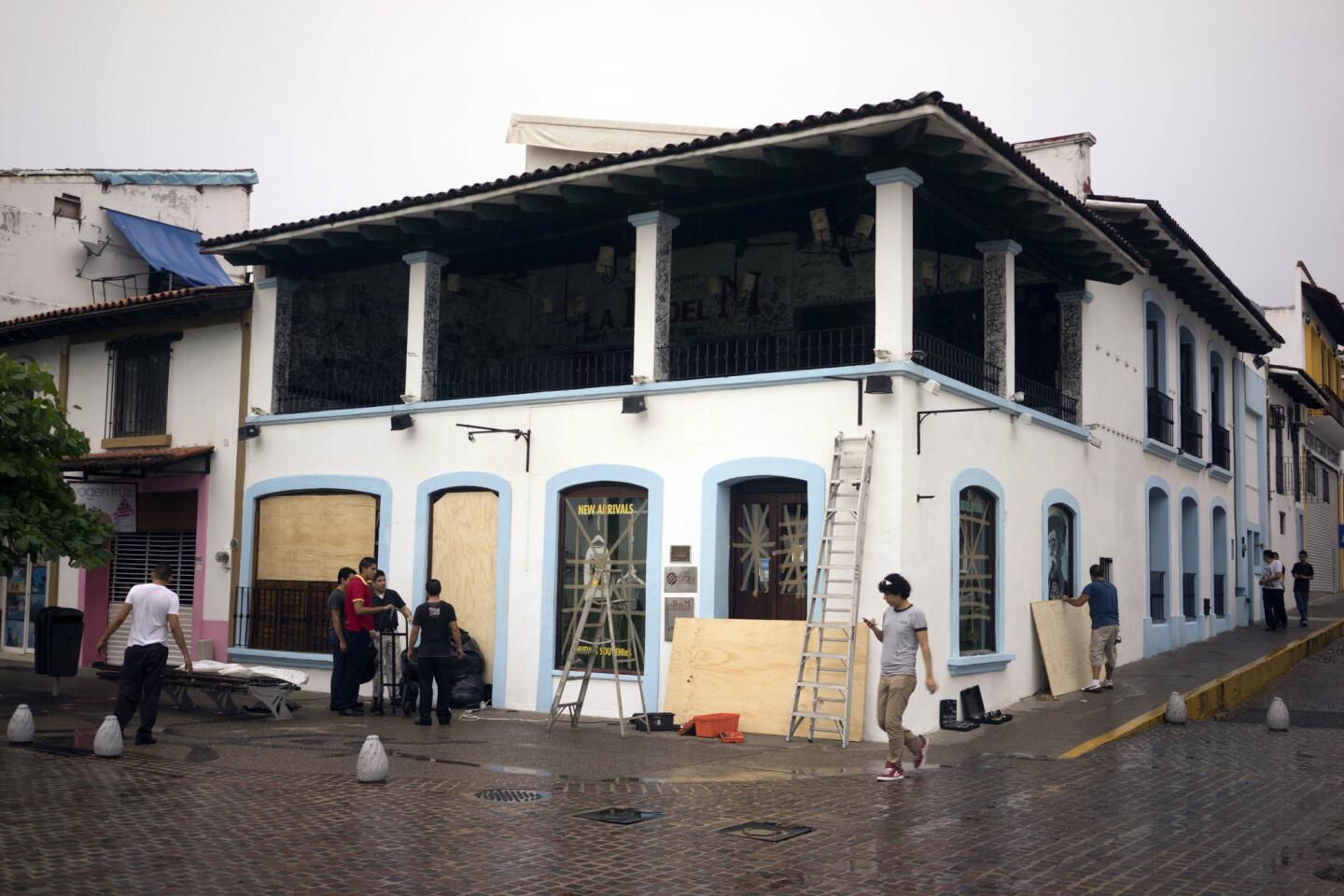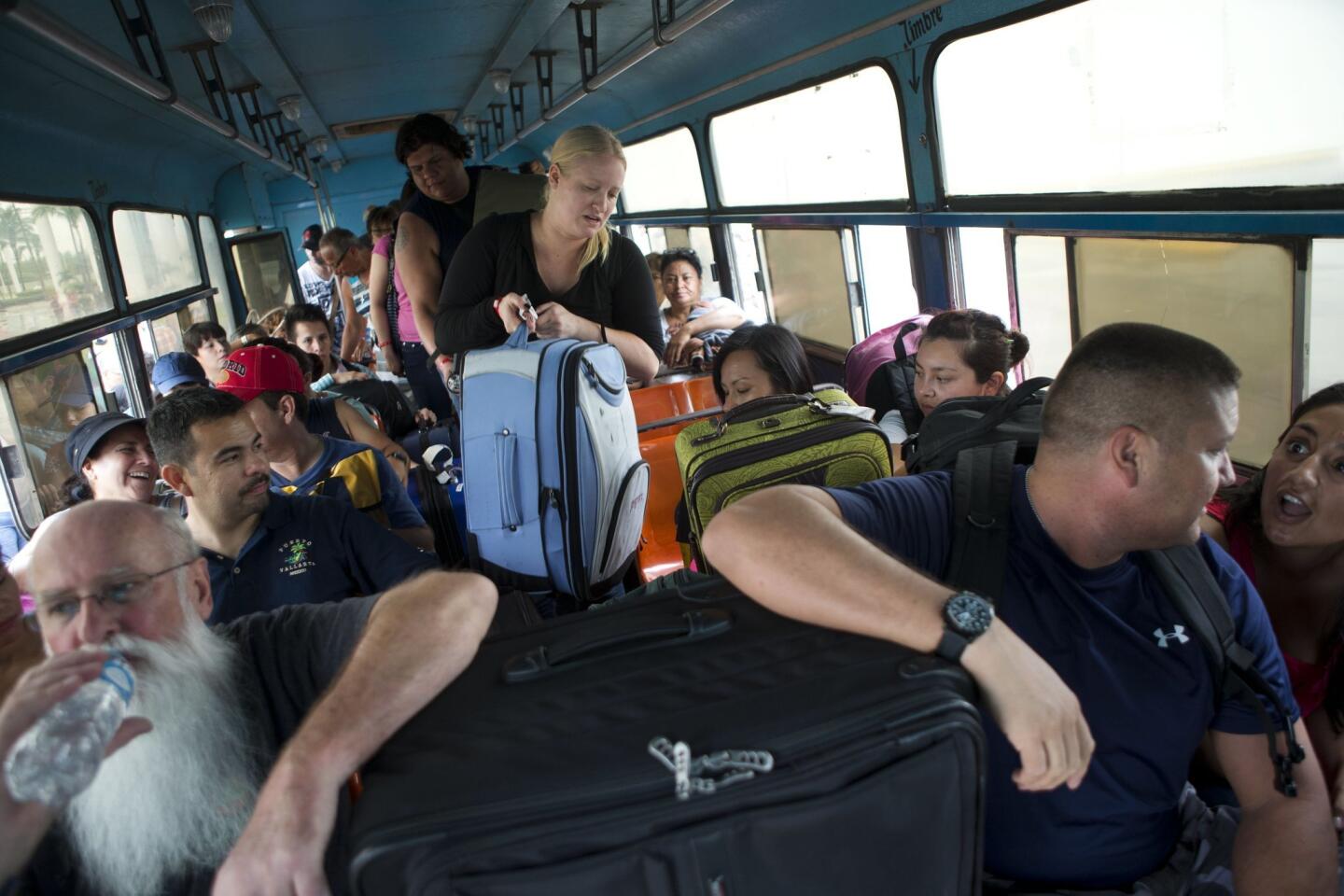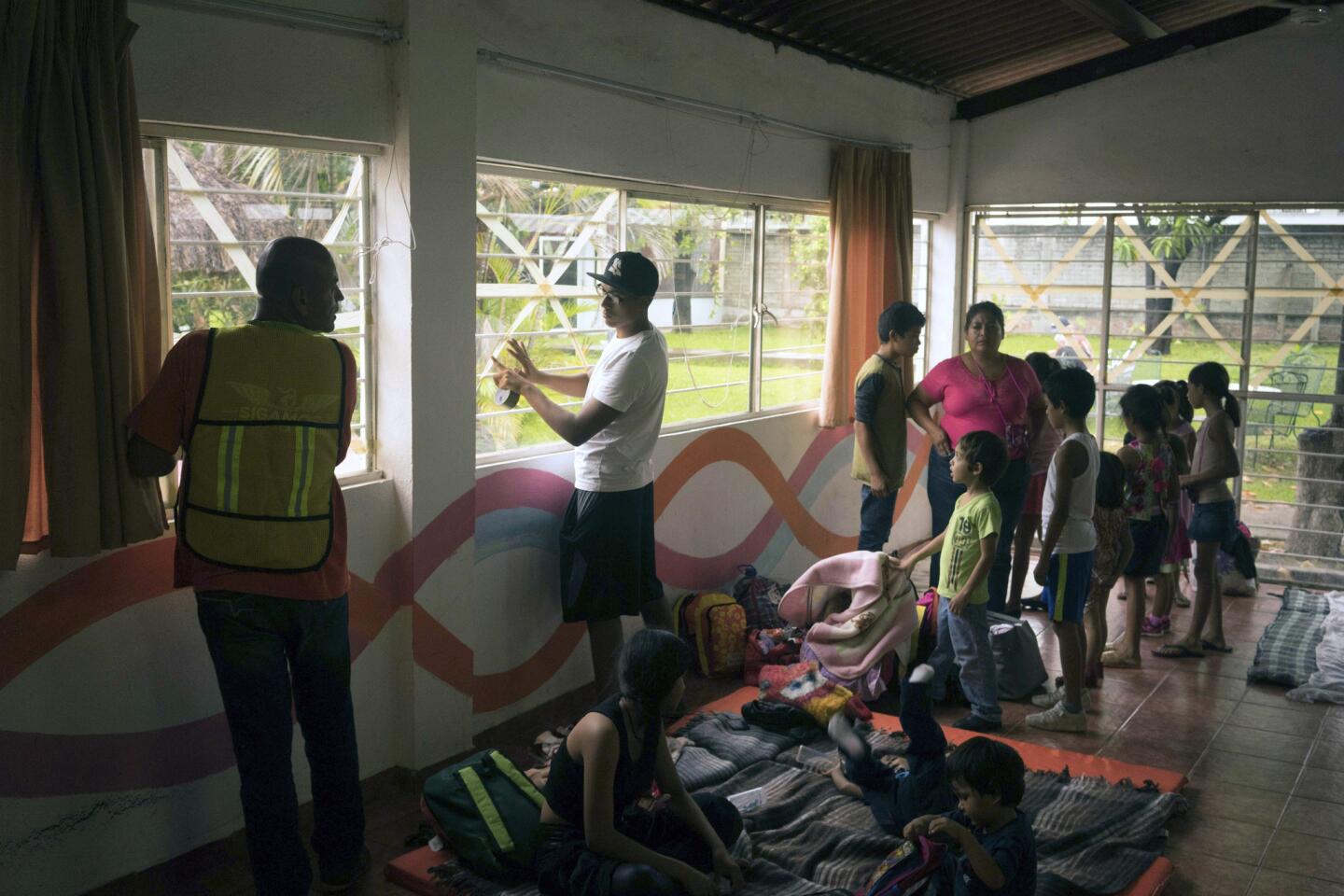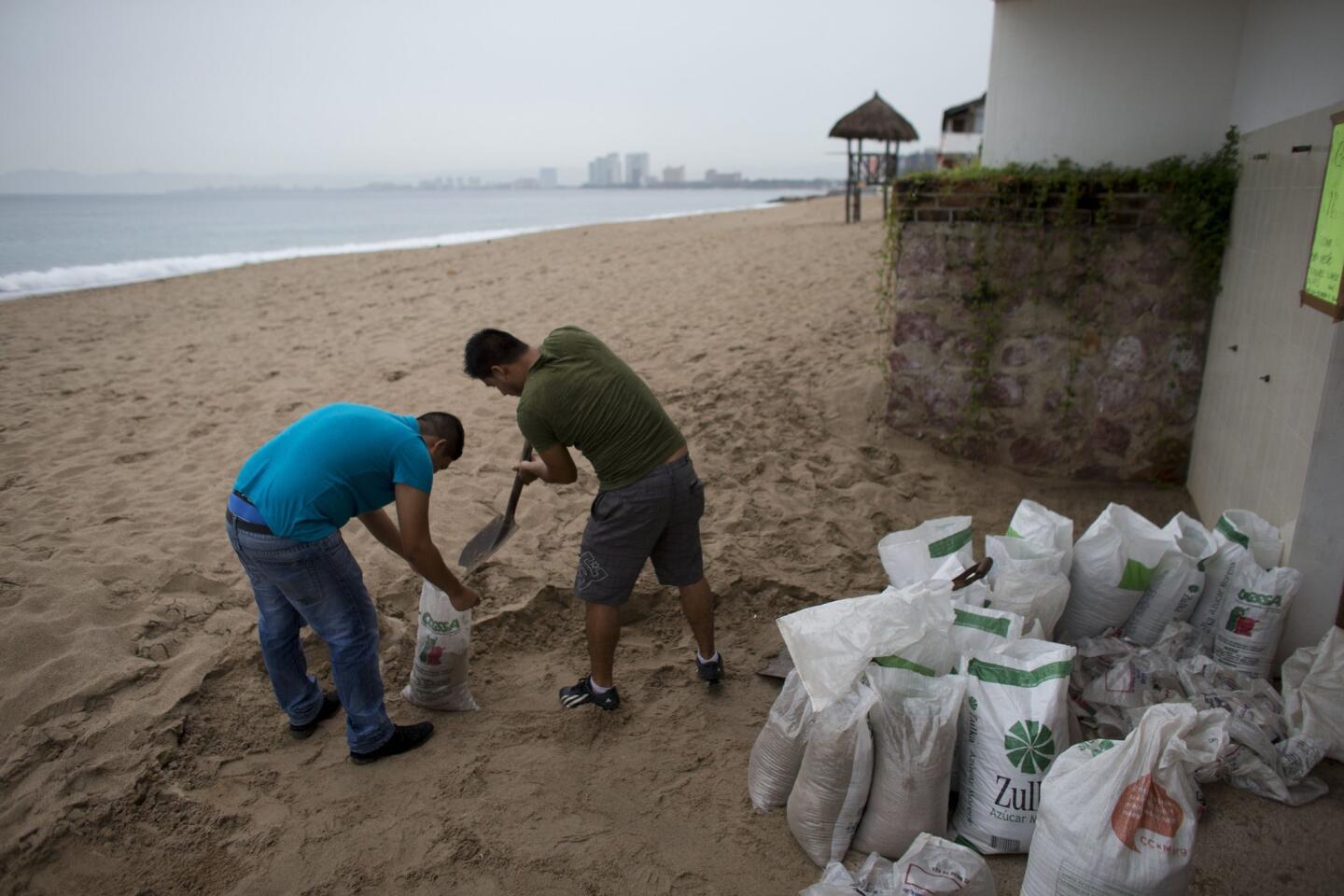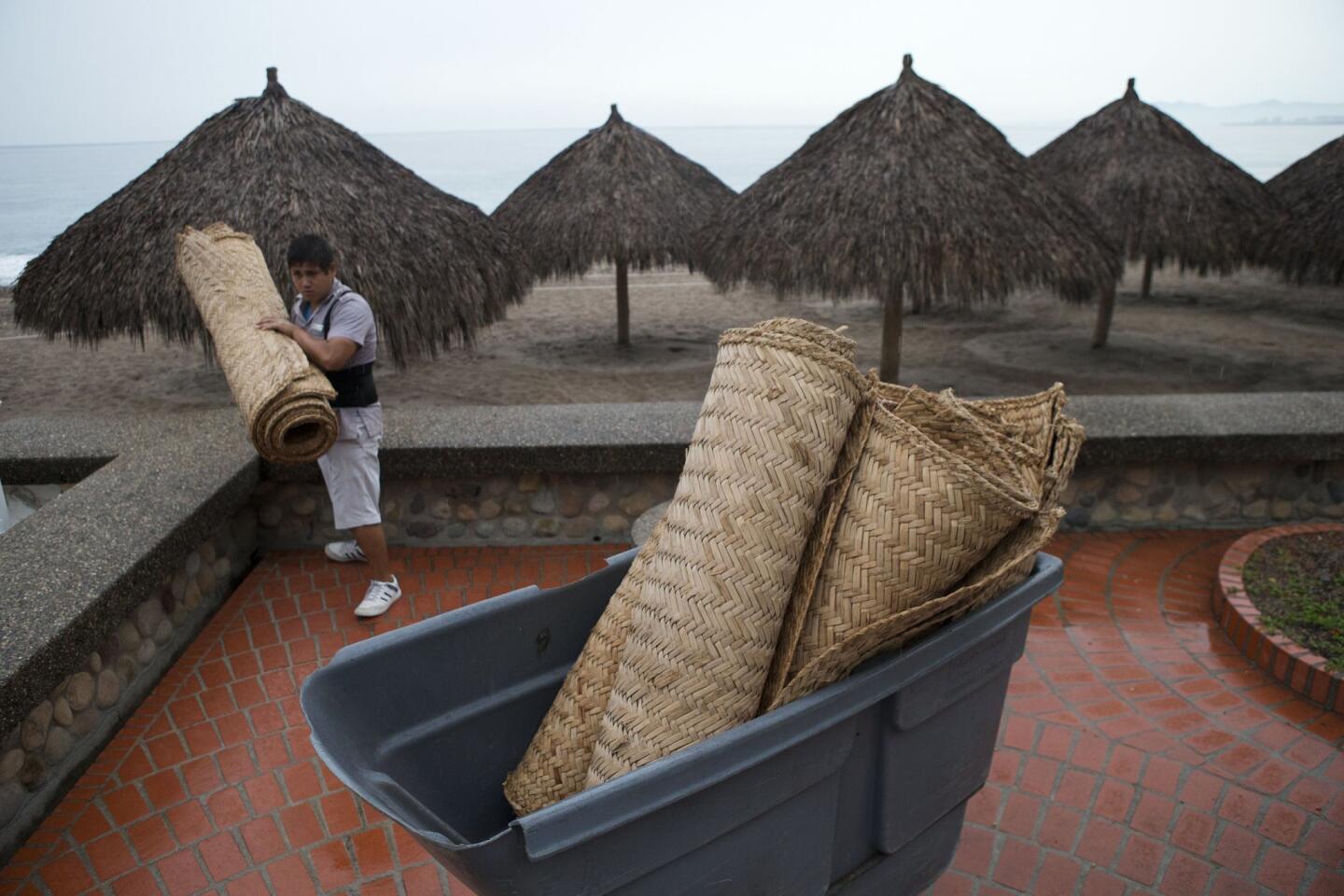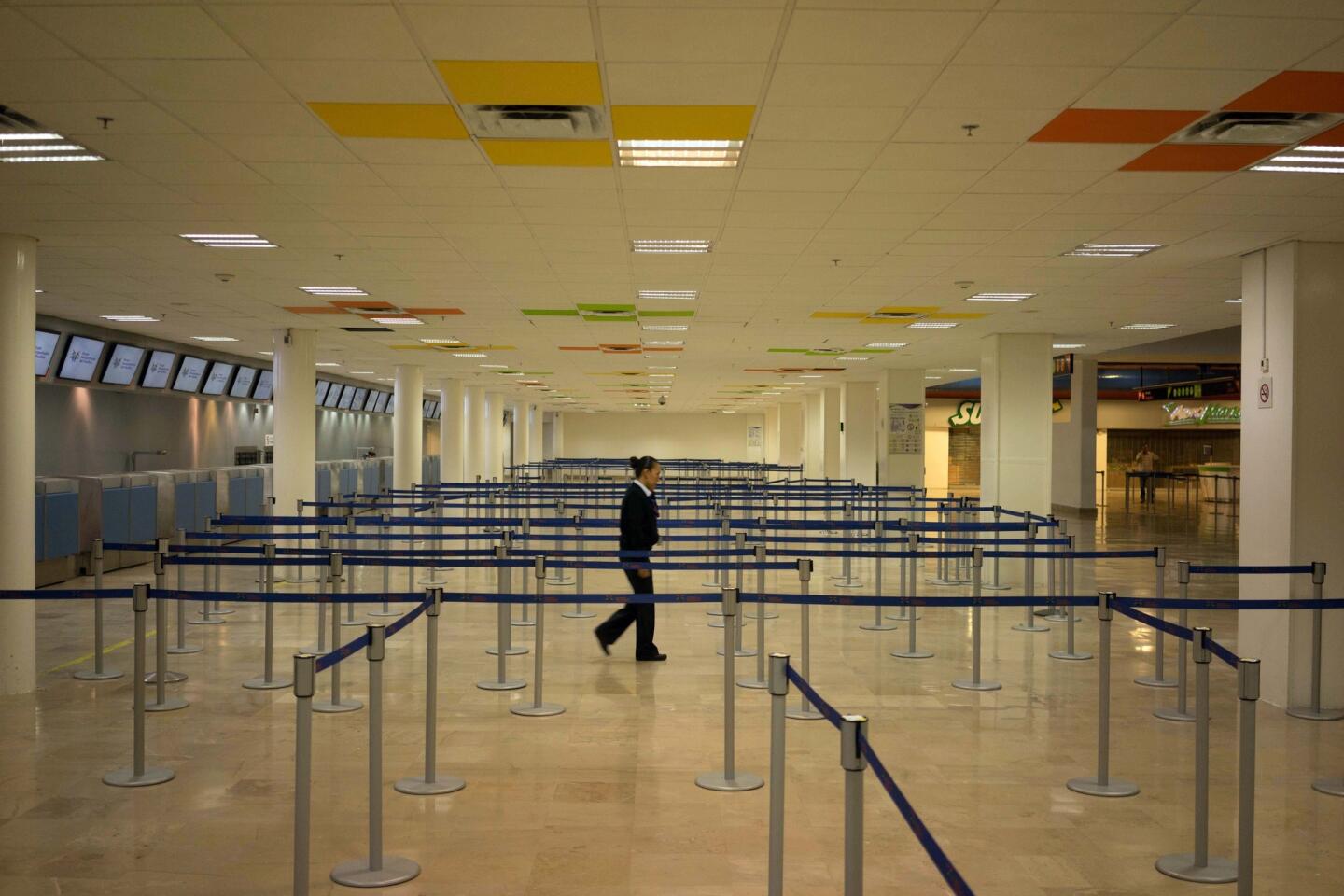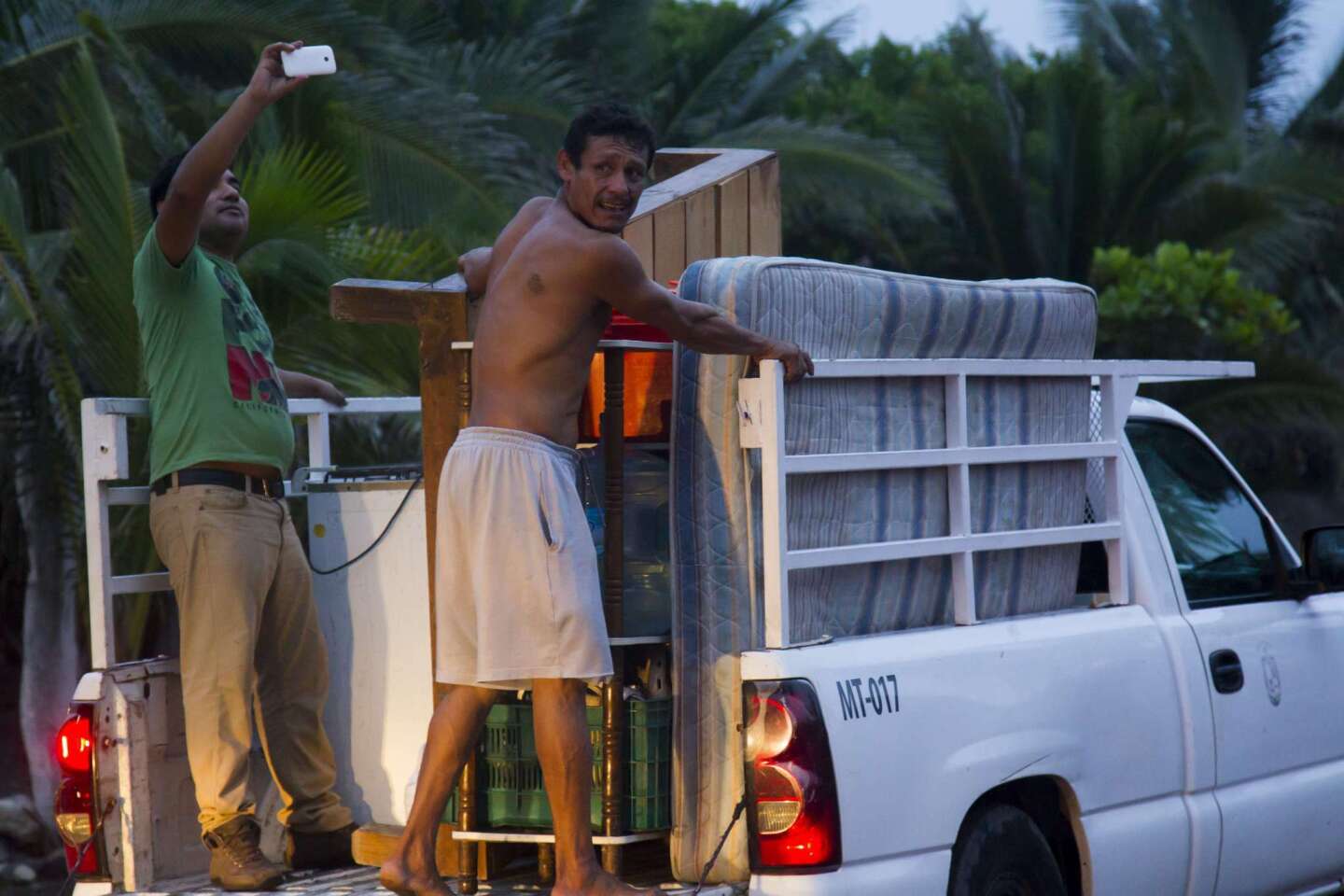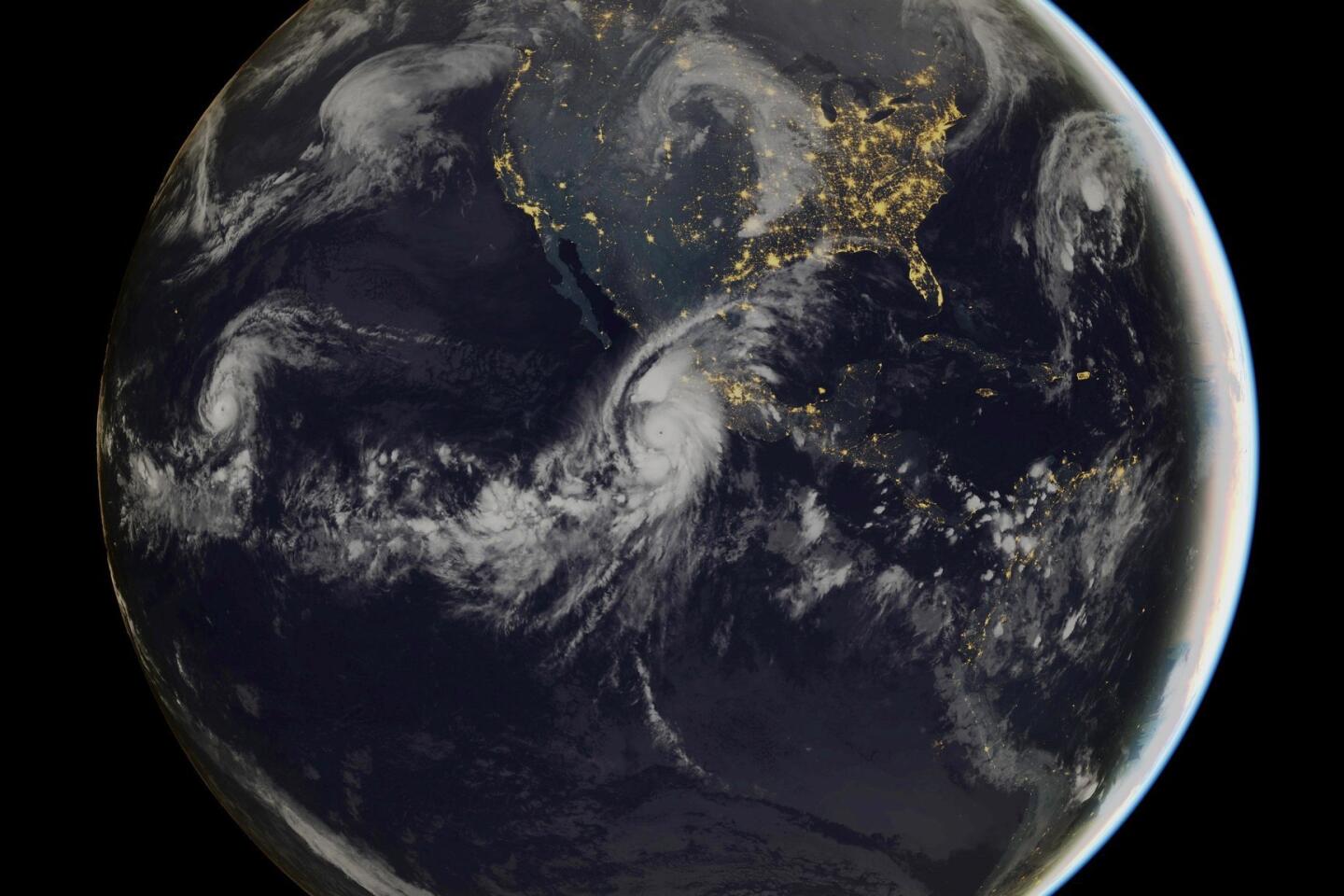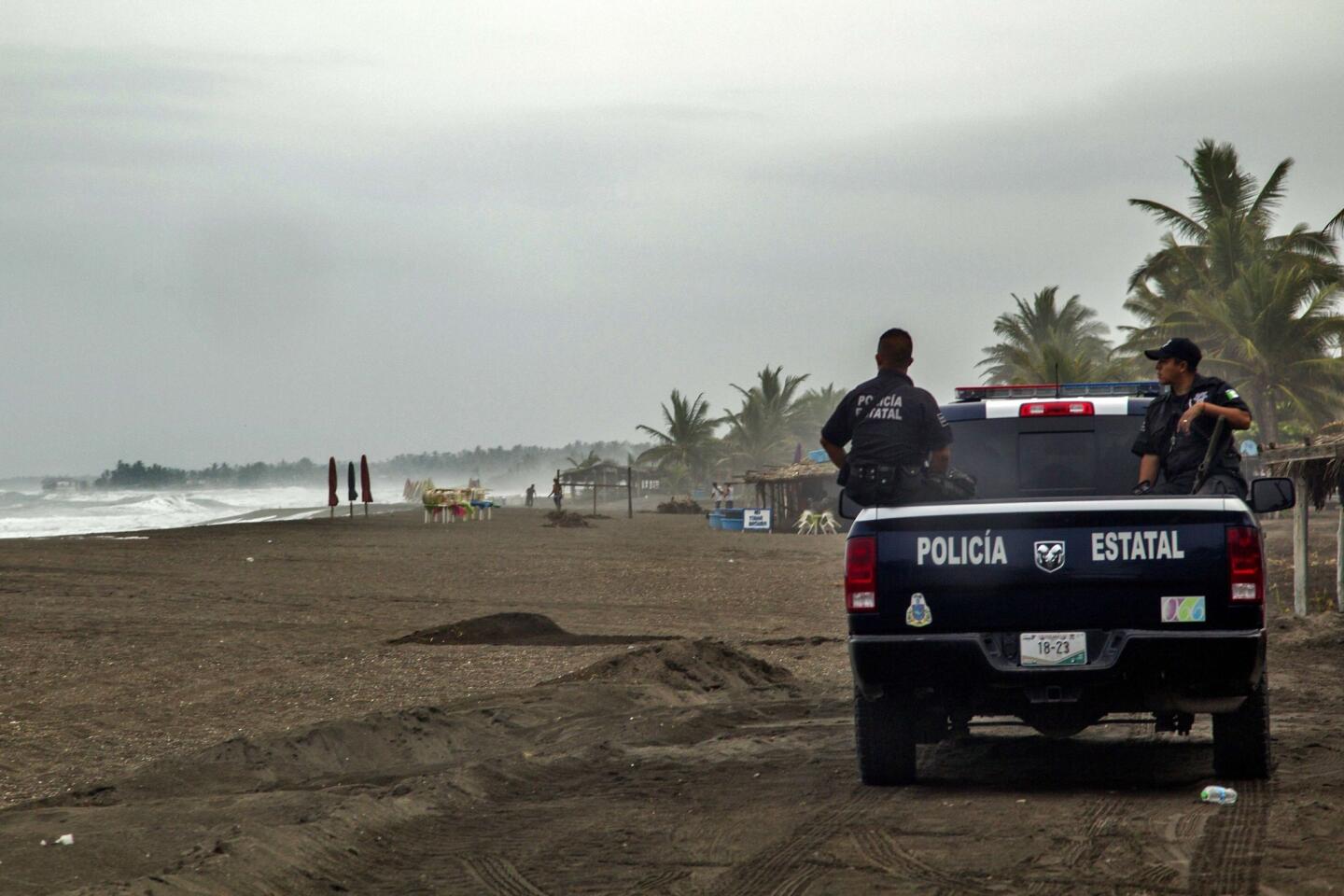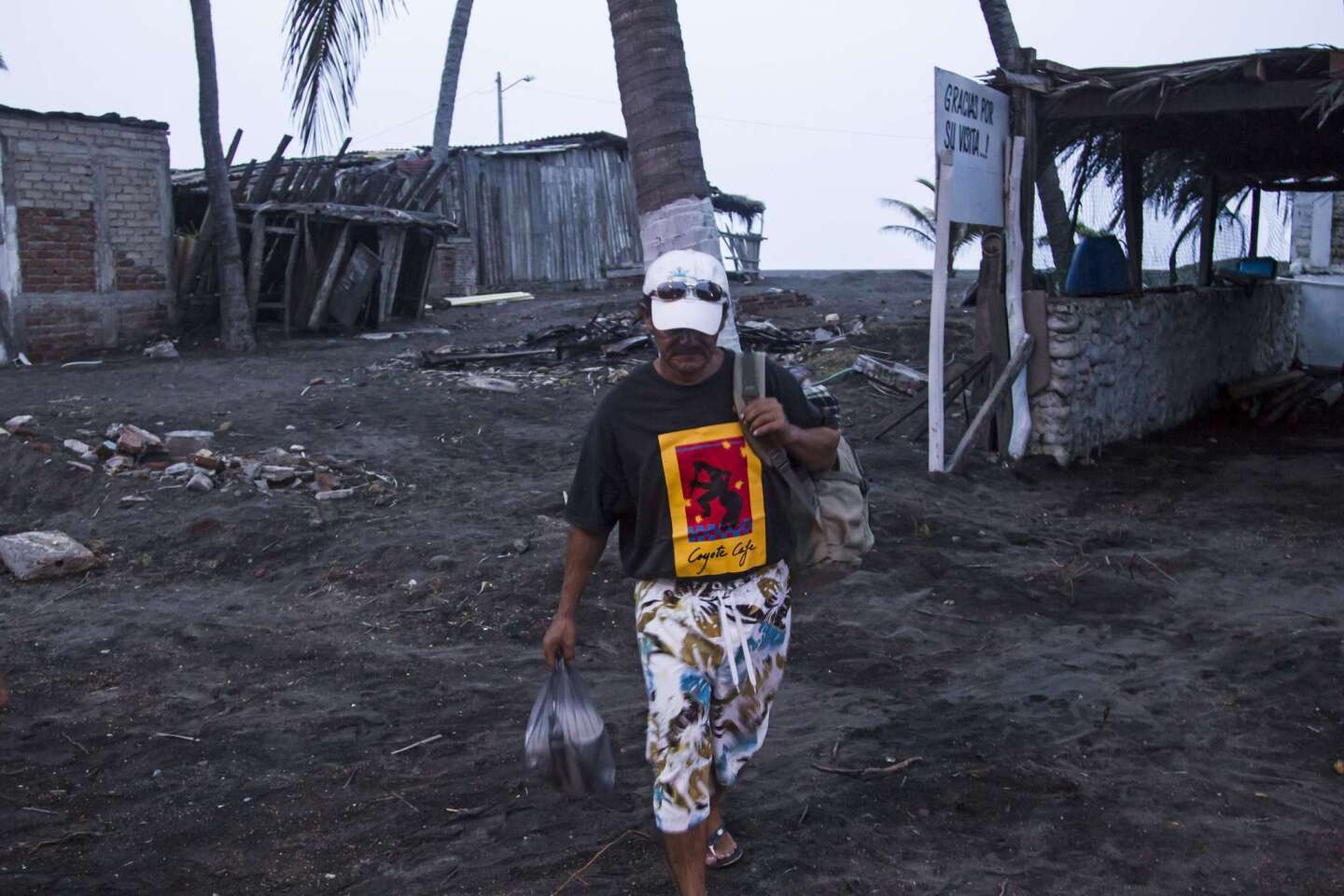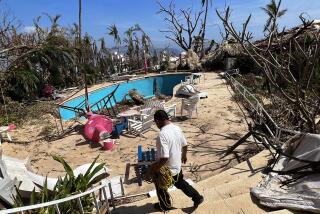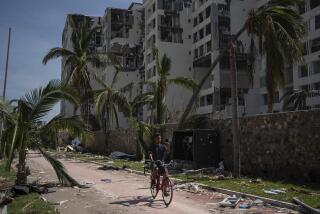Mexicans express relief and begin cleanup from Hurricane Patricia
Across Mexico, residents and tourists exhaled in relief and began cleaning up Saturday after the remnants of Hurricane Patricia blew toward Texas and the Gulf of Mexico.
Packing record 200-mph winds and rated a Category 5 storm before coming ashore, Hurricane Patricia barreled into the tourist-rich west coast Friday evening at 165 mph.
At sea, it had rapidly grown to record strength. But less than 24 hours after making landfall, it dissolved into a rainy low-pressure area, carrying winds of only 30 miles per hour, a far cry from what meteorologists had called the strongest storm ever to form in the Western Hemisphere.
There were no reported deaths, but some injuries, officials said. Little damage was reported in coastal communities and resorts.
Flooding continued to be a major concern in the Mexican mountains and for Texas, where 8 to 12 inches of rain were predicted. Some spots could receive as much as 20 inches, according to meteorologists.
The National Hurricane Center warned of flash flooding and mudslides in parts of the United States, where as many as 10 million people could still have to deal with the watery fallout.
Mexican officials said about 1,780 shelters had been set up for more than 240,000 people. About 3,500 people from a small island off the coast of Colima state remained in shelters Saturday night. In addition, a 50,000-strong force had been mobilized in Jalisco, Colima and Nayarit, and at least 4,000 Mexican navy officers were dispatched to areas at risk.
“We are fortunate the hurricane ... went to the mountainous areas,” Communications and Transport Minister Gerardo Ruíz Esparza told reporters.
“That lessened the impact. The wind and water hit us but our infrastructure was able to withstand that hit. The worst went to the mountains.”
Francisco Javier Rincon Manzo, 16, returned to his family’s roadside fruit stand Saturday, near Cihuatlan, but found that much of it had been blown away — the apples, watermelons and bananas gone. He had spent the night hunkered down with family members.
“We heard the winds screaming,” he said. “Roofs were flying. Tree branches too.” It lasted more than four hours. His family’s roof stayed on, he said.
Omar Rojas from the local Civil Protection office said the most serious damage was that a few stalls lost their roofs and some trees were uprooted.
“There’s been no loss of life,” Rojas said via telephone. “The river is high and there has been some flooding, but nothing very serious.”
Mexico had prepared for the worst, with officials warning people to stay indoors and brace for Patricia, which made landfall in a lightly populated area along Mexico’s Pacific coast and avoided direct hits on the resort city of Puerto Vallarta and the major port of Manzanillo. Both the warnings and the sparse population helped in keeping down the damage.
Patricia had surprised weather analysts with the pace of its growth, increasing from a tropical storm Thursday to a Category 5 hurricane by Friday morning, more than doubling in power and speed in less than 24 hours. Meteorologists said it was almost a perfect example of rapid intensification as warm Pacific waters and a calm upper atmosphere fueled its growth.
In less than 16 hours, what was a dangerous storm when it hit the coast had broken apart to an unnamed tropical depression moving across Mexico.
The mountains were a key reason why the storm dissipated, Dennis Feltgen, a spokesman for the National Hurricane Center in Miami, told The Times. “These mountains disrupted the storm system, and they just tore it apart.
“It is also no longer over water, which is like fuel for hurricanes,” he said.
On Saturday morning, the tourist resorts in Colima and Jalisco were reported to be calm and free of serious damage, in what Tourism Secretary Enrique de la Madrid described as a stroke of “extraordinary luck.”
Fallen lampposts, trees and billboards, accompanied by some flooding, appeared to be the extent of the damage in coastal communities. No deaths had been reported.
Jose Trinidad Lopez, director of Civil Protection in Jalisco, said Saturday morning: “We have no reported deaths. In Puerto Vallarta, we have reports that all is calm, hotels are operating normally, the infrastructure wasn’t damaged and both national and international tourists are safe.”
But Trinidad Lopez emphasized that it was still early to know the full impact of the storm in more rural, hard-to-reach areas.
“Many people remained in their homes in high-risk zones, and it’s too soon to know what happened to all of them,” he said.
Special correspondent Bonello reported from Mexico City and Times staff writer Muskal from Los Angeles. Times staff writer Alan Zarembo and special correspondent Cecilia Sanchez in Cihuatlan, Mexico, contributed to this report.
More to Read
Start your day right
Sign up for Essential California for news, features and recommendations from the L.A. Times and beyond in your inbox six days a week.
You may occasionally receive promotional content from the Los Angeles Times.

